Previous Episode

episode
Charleston, SC, Hour 3 (2016)
Remington, Hendrix, and Whistler: all are featured in Charleston, SC Hr 3!
Next Episode
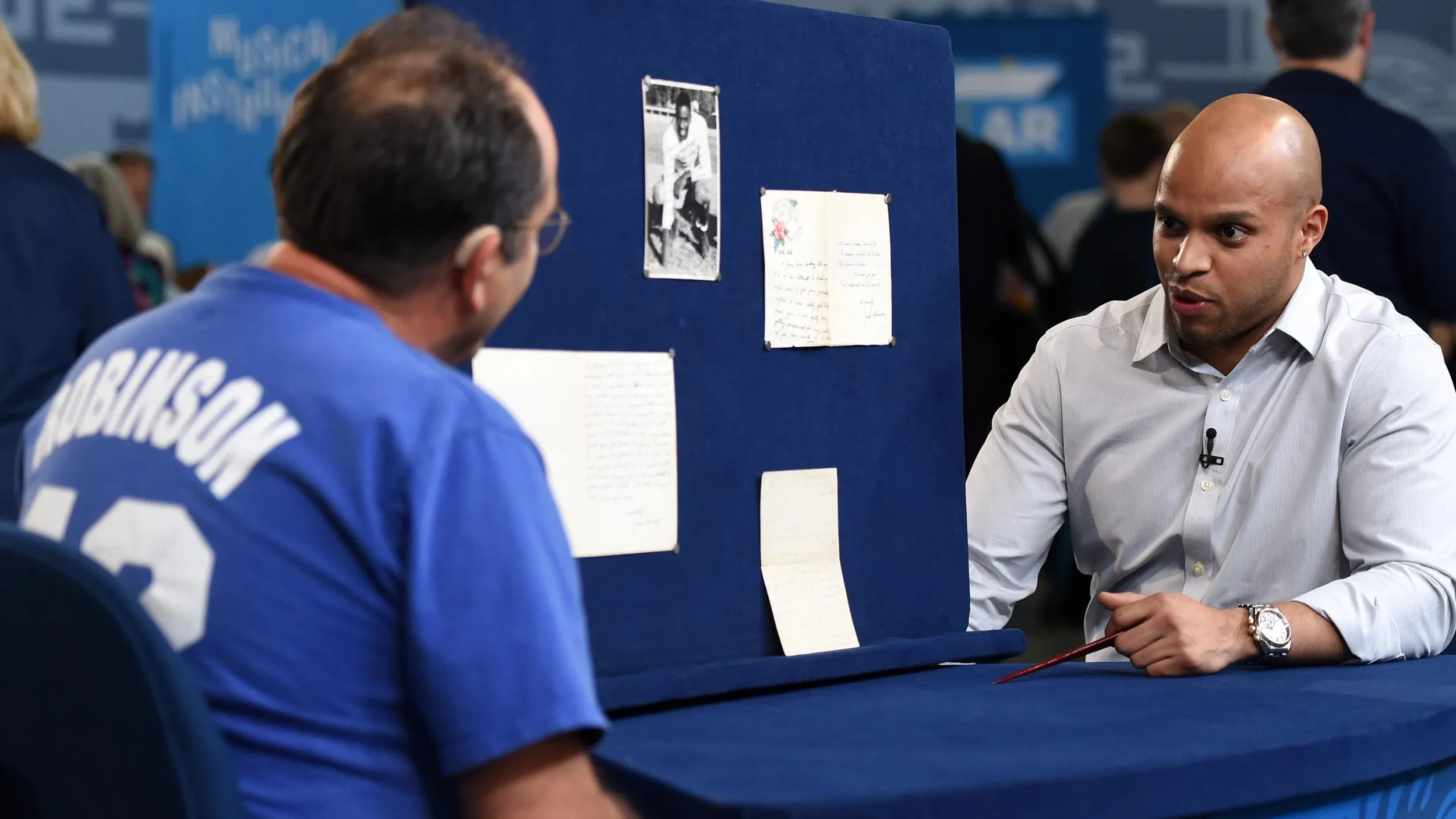
episode
Tucson, Hour 2 (2016)
A Jackie Robinson archive, a GMT Master Rolex, and diamond and onyx jewelry.
An Allen Ginsberg-signed yearbook, an Anna Pottery jug, and an Alfons Walde oil!
HOST: Fantastic treasures from Arizona are on the horizon as Antiques Roadshow visits Tucson.
APPRAISER: The brothers at the pottery actually had a snake pit. They would go out, sell their wares and actually take the snakes with them.
GUEST: Really?
HOST: Beautiful, bright blue skies welcomed Antiques Roadshow to Arizona. The Tucson Mountain Park had incredible desert views, while back at the event, thousands of curious collectors waited to discover if their treasures were hot or not. Take a look.
GUEST: This is my Harper's $500 little brown jug that has been in my family four generations, I believe, and it's now come to me. I've done very little research. All I know is that it was used, I believe, for alcohol, and that the $500 referenced some obtaining of a liquor license at the time.
APPRAISER: The Anna Pottery Company was started by two brothers. Their names were Kirkpatrick, in Anna, Illinois, and they were in business from 1850s until the 1890s. And they made stoneware pottery, and one of the things that was so unusual about them was that they used their pottery to express their political beliefs.
GUEST: Okay.
APPRAISER: And lots of times, the sayings on their pottery had something to do with temperance, political corruption. In this case, we have, of course, the serpent, the snake watching the bottle, and on the front there, it says, "Harper's $500." And as you go around the jug, it says, "little brown jug, " and then it's got the date, 1883. That was a license law. It was called a high-tax law or a high-license law in Illinois that was passed in 1883, which made it very difficult for anybody to get a new saloon license. The people that collect American stoneware pottery are crazy about Anna Pottery. They did pig flasks with maps on them, they did jugs bigger than this with multiple snakes on them. This particular one is an unusual form because of the size, but also because of the pinched form. When it was made, it was made round and then they pinched it in to make it more of an oval shape, and if you look on the bottom, it says, "Anna Pottery."
GUEST: Right.
APPRAISER: And the date, 1884. I read that the brothers at the pottery actually had a snake pit there.
GUEST: Really?
APPRAISER: And they used to go over and study the snakes, I guess, before they would model them. And they would go out and sell their wares and actually take the snakes with them.
GUEST: Wow!
APPRAISER: So, have you had any ideas about what you thought it might be worth?
GUEST: No, just because... There's not really anything conclusive about this particular style that I found.
APPRAISER: Well, one just like it sold at auction two years ago for $10,400.
GUEST: You're kidding!
APPRAISER: No.
GUEST: Okay, that's much more valuable than I would have thought.
APPRAISER: Yeah.
GUEST: Okay.
APPRAISER: For insurance purposes, you probably could put $12,000 on it.
GUEST: Okay.
APPRAISER: It's fantastic, it's a rare form. Not only that, but it's in perfect condition. Thank you so much for bringing it in. It made my day.
GUEST: Thank you so much. I appreciate it.
GUEST: I brought you a senior graduating yearbook from the class of '43, for Eastside High School, Patterson, New Jersey. In it, I'm proud to say, was one of our students, one of our friends, one of my friends, was Allen Ginsberg.
APPRAISER: So you were friends with Ginsberg throughout high school and you graduated with him?
GUEST: Right, and I had no indication he would go on to do those wonderful things that he did, become as famous as he did, but he was just a nice guy to pal around with.
APPRAISER: So, here we have Allen Ginsberg's senior portrait. He inscribed to you, "May all your 50 children be Democrats-- Allen Ginsberg." Can you tell me, was that an inside joke between you and he?
GUEST: Not really, but I know his tendencies were Democratic, and I was 48 short of his goal, but…
APPRAISER: I even have to read here what it said about Ginsberg in high school. Among many other things, it said, he's called "professor" and he's the "philosopher and genius of the class." Was that true at the time?
GUEST: That he was.
APPRAISER: And then it even goes on to say, "He hates dull teachers and Republicans." So even back then he was political, it sounds like.
GUEST: He was. The poems that he did write, it was always some sort of a... slightly rebellious attitude that he had.
APPRAISER: Already anti establishment, right. So, Ginsberg was your class poet!
GUEST: Class poet-- right.
APPRAISER: It's a great class poem. I really like the last line, which I think is very inspiring, and it says, "Ready are we to meet the challenge hurled: To battle, conquer, and rebuild the world."
GUEST: Right, that's typical Allen, right.
APPRAISER: And then, on a little bit more fun note, and kind of, I think, showing signs of the Ginsberg he was to become, he writes you a personal message in the back. Can you tell me the story behind getting that from him?
GUEST: Well, we all started, got our yearbooks, and everybody's signing everybody's yearbook, and he grabbed mine, he started writing and writing and writing, and I said, "Allen, you're defacing my yearbook. Give me back my yearbook!" When he finished, lo and behold, he wrote this, this is the "Katz Pajamas," my name being Katz. I thought it was kind of humorous, put it aside. It wasn't till I spoke to my niece, oh, a couple months back. She said her daughter, my grandniece, is studying the beatnik generation, and I said, "Well, gee, I'm a member of the beatnik generation. In fact, I have one of the honchos as my classmate." I photographed the poem, sent it to her, and I became an instant hero for her daughter.
APPRAISER: Had you had the yearbook out?
GUEST: The yearbook has been in a closet for maybe 70 years now, 72 years.
APPRAISER: He wrote to you, "this is the 'Katz' pajamas, our graduating now, I wish to say that I'm a graduate, too, and bow. Now this is the point of my story, this horrible fight for glory of commencements is a lousy biz."
GUEST: There you go!
APPRAISER: Then he wrote, "But Katz, you've conquered, I'll meet you in Yonkers, when I go to Columbia and you go to Wrongers."
GUEST: Well, it was a takeoff on Rutgers, which I didn’t go, but.
APPRAISER: And then he wrote, "Congratulations on my graduation, Allen Ginsberg."
GUEST: Yeah, he was very droll.
APPRAISER: So after he wrote this, did you stay in contact with Ginsberg?
GUEST: Not really. However, about a month or two later I was going for a job interview in New York City and he happened to be on the bus also, and we, both of us, gravitated to the back of the bus and we had a nice conversation, and then we hadn't seen each other in 50 years until our reunion, and everybody was waiting for Allen to come in, and he did and with a smile on his face, and it was nice talking with him. There was nothing put on about Allen.
APPRAISER: As we know, he went on to become, as you said, one of the main honchos of the Beat Generation, along with William S. Burroughs and Jack Kerouac, and I think this is just such an interesting early look at who he was going to become. As a signed yearbook, by Ginsberg, just the signature with the fun saying and his photograph, I would have said, a retail value of about $1,000.
GUEST: That's nice.
APPRAISER: But, we don't just have a signed yearbook, we have a yearbook with an early Ginsberg poem. He's 17 years old, he's about to go off to Columbia, and I think with this additional poem he wrote to you, I think this would retail for $10,000.
GUEST: Oh, my God! Well, maybe it's not going back in the closet, I don't know.
GUEST: 666!
GUEST: That's the devil's highway.
APPRAISER: Go ahead right down the line here, get on into the show.
GUEST: It was given to me by a friend. He passed away a couple of years ago, in his 80s, and it was owned by his aunt, and she had a radio show in Detroit in the '20s or '30s and he knew I had started playing the ukulele so he gave it to me.
APPRAISER: This is a Martin style two from the mid to late 1920s, and the reason that it's so exceptional is that it has been used quite a lot, but it's in fantastic condition. You can see the wear from her left hand...
GUEST: Oh, yeah!
APPRAISER: from the first position and she wore right through the finish, but yet the rest of the instrument is almost spotless. It was their second highest model that was made of mahogany. It has celluloid binding around the edges and the same is true of the buttons of the tuners. Probably has a retail value in a specialty shop of around $1,500.
GUEST: Oh, my gosh! Really?
APPRAISER: Yes.
GUEST: My father, he worked for the government out in Washington, D.C. He was born in the little town of Tabor, Iowa. He had an account at the bank there and when I went down there to pick up what he had, he had a safe deposit box, and these were in it and I'd never seen them, never heard of them, and these were part of what I inherited. We have a jewelry store. When I seen them, I looked at them, I knew they were solid gold and what they was, and but I didn't know anything about them. We had a party there appraised them and he appraised them right at $8,000 for the two of them.
APPRAISER: Well, how many years ago was that?
GUEST: About '95.
APPRAISER: We're going to start with the fact that they're snuff boxes. You had some paperwork, a portrait of a gentleman...
GUEST: Yes.
APPRAISER: Henry Dearborn, and this box, inside, is engraved with his name. He was probably gifted this box, but I could tell you for sure that this is not him on the shell cameo.
GUEST: Okay.
APPRAISER: On the cameo is Napoleon, it's not Dearborn.
GUEST: Well, I'll be darned, okay.
APPRAISER: But I got a little bit of bad news for you. This cameo section, you can see how over here it comes over the edge and over here it comes over the bottom edge, and if you really look at it and analyze it, it's a little crooked. This piece was applied to this box.
GUEST: To it, okay.
APPRAISER: So it's not original. It's what we call a marriage in the business, right? This box here is French, has a French hallmark in it. It also has a maker's mark in it.
GUEST: Okay.
APPRAISER: From about the early part of the 1800s. A box like this today, at auction, may be $2,500 to $3,500.
GUEST: Okay.
APPRAISER: Now let's go to this box.
GUEST: Okay.
APPRAISER: I love this box. This is what they call Swiss enamel. This happens to be large for its size. We think it's a scene from Greek mythology in Troy. It may possibly be Hector and Andromache. The detail in this is just incredible. I love over here, on his epaulets, the detail in this face, and you see the emotion in them talking to each other.
GUEST: Mm-hmm, mm-hmm.
APPRAISER: It's incredible. Then, we go down here to the side, and we see we have beautiful oak leaves...
GUEST: Yes, yes.
APPRAISER: ...underneath the blue enamel in the edges, but the best part of this box, the best part, I think you kind of know what it is...
GUEST: The butterfly.
APPRAISER: ...the butterfly.
GUEST: You cannot believe how that butterfly just stands out when the sun's shining on it.
APPRAISER: So let's show everybody. I'm going to put a...
GUEST: Okay, a little light on it.
APPRAISER: A little light on it…
GUEST: Yeah.
APPRAISER: …and just look at that, how it pops.
GUEST: Yeah, you can see that it's beautiful, yeah.
APPRAISER: Incredible. Interesting enough, there's no hallmark on this box, there's no maker's mark.
GUEST: It looks like 18-karat.
APPRAISER: Oh, it is 18-karat. We believe this box was probably manufactured sometime in the early part of the 1800s. Although we call it Swiss enamel, the box very well could have been manufactured in France.
GUEST: I see.
APPRAISER: We truly feel that today, this box, at auction would bring $20,000 to $30,000.
GUEST: Wow! This one here?
APPRAISER: This one here, the butterfly.
GUEST: Boy, I'm happy, but can you imagine how happy my wife's going to be? (both laughing) I had no idea on any of that price. That's wonderful.
GUEST: My mother… remarried, and this was in the household and when her husband passed away, it went to her, and when she passed away, it went to me. It has "Tiffany" on the bottom. I'm not sure if it's a Tiffany, because I watch the Roadshow enough that they look at the bottom and they say that's not a real Tiffany.
APPRAISER: You are right, it absolutely is a piece of Tiffany glass.
GUEST: Oh!
APPRAISER: And it is true that a signature is the easiest thing to fake, and it's always the piece that you look at first.
GUEST: Uh-huh.
APPRAISER: This was supposed to harken back to the glass of ancient Egypt that was discovered at Tel-el-Amarna in the 19th century, so for many years, this particular type of glass was called Tel-el-Amarna. Some people call it Byzantine glass. The Tel-el-Amarna was actually referring to a turquoise color, but when I look at it, when I think Tel-el-Amarna, I'm looking at the zigzags that you see on the collar. Usually, you'll see this zigzag decoration in different colors from the actual body of the vase, and sometimes you'll have interlocking chain link design on it also in a different color. But what's interesting about this piece is, the signature on the underside has a suffix letter H, which is actually indicates that this is a later Tel-el-Amarna piece. The earlier pieces usually carried an E suffix. The H suffix denotes that it was made around 1913, whereas the early ones were made in 1909, when it was first introduced.
GUEST: Okay.
APPRAISER: If we look inside, it's got a lot of white sediment on the inside. Initially, I thought, oh, goodness, someone used this for flowers, but I actually think this might have been in the making, because when I held it up to the light, which is what most people do when they're buying glass, they look to see if the glass is sick inside. And it's so opaque that you can't see the sickness. I would say that in a retail venue, because it does have the white stuff on the inside, I would say it's worth between $2,000 and $3,000.
GUEST: Whoa!
APPRAISER: Now, if it didn't have the white stuff on the inside, I would put a value probably between $8,500 and $9,500.
GUEST: Whoa, whoa!
APPRAISER: So it does affect it to some degree.
GUEST: Yes.
APPRAISER: By the way, there's something on the inside here. It's a matchbox!
GUEST: Yes, it's a matchbook.
APPRAISER: Yes, nothing to do with Tiffany…
GUEST: No.
APPRAISER: This is, um...
GUEST: I had it and I thought, well, I'll save that, and I stuffed it in the… vase.
APPRAISER: Okay, and how long has it been in the vase?
GUEST: Probably since Nixon was elected.
APPRAISER: I actually spoke to somebody in collectibles, and it doesn't have any value because the matches are all gone, by the way.
GUEST: Well, I was smoking at that time, not anymore.
GUEST: My grandmother gave it to me. We believe it's been handed down from the family. We're not clear where it came from, but she's known it all her life, and her father had it.
APPRAISER: The Civitates Orbis Terrarum is a book that was published in Cologne starting in 1588. It says down here that this is "liber primus," which is the first volume. Further down in the back is the second volume, and all together the work actually has six volumes.
GUEST: Oh, wow.
APPRAISER: So, we have the first two volumes-- which are quite rare, we hardly ever see those-- of the first comprehensive city atlas that was published in Europe of what was then the known world. And these are really spectacular engravings as you can tell. They're fairly large size. And to print a book in 1588 with that precision was still something that only a group of specialized printers were able to do. And Cologne was one of the printing centers. Holland was back then at the height of printing. The authors are two gentlemen called Braun and Hogenberg. Let's have a look at some of these prints. This, for instance, is a view of London. It is referred to as a bird's-eye view and you can kind of envision and wander around in the streets of London, and down here you get descriptive text about the city and then, usually, the plates are decorated with people in contemporary costume. This is a beautiful view of Paris, where you can see the Œle-de-France in the center and then the Left and Right Bank. You get a nice view of the city of Prague, for instance. Underneath, you can see the Hradschin up here. There's one of the city gates. There's the Karlsbridge. These are very realistic views of that time. This is a beautiful example of Venice…
GUEST: Oh, wow.
APPRAISER: …printed from one plate, and you see the darkness of this impression, which is really, really awesome. Do you have an idea of what this could be worth?
GUEST: I do not. In my minimal research I did online years ago when I got it, was I couldn't find any like it. And, uh… just plates that people had colored.
APPRAISER: Yeah, many times a work like this would have been broken up and sold in individual plates. Now there are only a few, a handful of books left complete and nowadays the trend is that a work that is left complete actually achieves a higher price than the individual plates sold separately. A conservative estimate for this book at auction would be $40,000 to $60,000.
GUEST: Wow, that's amazing.
APPRAISER: Yeah. You were wondering about the binding. This is a beautiful, what is called vellum binding, so it is a calf or a sheep skin that is treated to get this white shine, and slightly bowing. The binding is not from 1588. It is slightly later. I would think it is probably bound in the 1600s or in the late 1600s.
GUEST: Hi!
APPRAISER: What have you got for me?
APPRAISER: It was much more popular some 20 years ago, less today. Retail price of $200 to $250.
GUEST: This has been passed down on my wife's, uh, side of the family for generations. We found some letters documenting that it started in, I believe, 1859, and that it was made for one of the daughters of the great-great-great- grandfather. They settled in an area called Lancaster. The letter also stated that it was to be given to the eldest daughter of the family as the generations progressed. Um… so my wife ended up with it in 1997...
APPRAISER: Okay.
GUEST: ...and she's intending to give it to her daughter.
APPRAISER: It's interesting that you said Lancaster, PA, because when I saw this box I thought Pennsylvania, and what we have here is like a child's chest. It's got this great salmon-colored paint. And this floral decoration on the front, top, and sides are very indicative of the type of paint decoration you see on Pennsylvania furniture, I'd say mid-19th century. And one of the ways we can tell that is by the shape of the turned foot here. I would say that this is actually the original paint of the box.
GUEST: Whoa!
APPRAISER: It's got great surface, and cute sells. Everybody loves diminutive things, this great child's blanket chest. If this were in an antique store, I wouldn't bat an eye if I saw a price tag of $2,500 on a piece like this.
GUEST: Whoa!
APPRAISER: Gonna view it a little differently now?
GUEST: Oh, yeah, oh, yeah!
APPRAISER: Yeah.
GUEST: Wow, who would have known?
GUEST: My great-grandfather was Baron Patrick Surcouf, He was the French provincial governor of Cambodia and Laos, I think around the '30s. So I have a couple stories that have been passed down through the family of how exactly this came to be, one of which that it was actually unearthed and given to him by a government official in the Cambodia or Laos area, and then the second was that they actually purchased it there and it had originally been used as a dish for food for an emperor, and that it would actually change color if the food had been poisoned. It would alert them to the fact that there was poison in the dish, so, I'm not sure if any of those have any merit but those were the stories that have been passed down.
APPRAISER: Okay, the color green was the first clue, aside from the size and the shape, that this in fact is from China. This was one of the types of wares we call ceramics wares, that were made for export from China to various parts of the world, mostly Southeast Asia and often to the Middle East. And one part of the story, that this was made for food, is absolutely accurate. This was a large serving dish. This particular color and this style of decoration was associated with one major kiln site in China which is called Jaejoong, which we know today as Hangzhou, but Jaejoong province. They made green wares, which we call celadons, and I'm absolutely certain that some of these were used in the imperial household. This dates most likely to the 14th century.
GUEST: Oh, wow.
APPRAISER: Which is the very beginnings of the Ming dynasty, and I say that because of the shape, this kind of fluted interior, and if you look here, it's hard to see, but there's a flower in the center that's impressed into the surface.
GUEST: I noticed that.
APPRAISER: A little bit of a decorative element. I'm going to turn this around so that we can see one of the other clues that we have on origin, is this kind of foot where you have the ring here on the base, the glazed foot. This is a little bit more unusual than most, the way the glazing is done, and it's possible that the story that you had, that this was buried, was also true.
GUEST: Interesting.
APPRAISER: But it's also possible that it was purchased in the marketplace and it was given.
GUEST: Okay.
APPRAISER: Because this would have been considered, even 70, 80 years ago, a very nice object. What makes this one particularly good is the large size. It's almost 18 inches in diameter. It's hard to make a large ceramic object, because the clay, which is malleable, bends, so to keep that from splitting and cracking and having fissures that make it unusable is difficult. Now, one of the things you've heard about the color green being protective and so on, it's kind of mythology. You want to venture any idea on what kind of value this is?
GUEST: I honestly have no… I have no idea.
APPRAISER: Well, you might be surprised, then, if I were to say this was worth somewhere between $15,000 and $25,000.
GUEST: Wow.
APPRAISER: At auction.
GUEST: Wow, that is very surprising.
GUEST: I have my grandfather's Marine Raider stiletto knife, and during World War II, he brought this to Vanguna, which I believe is, uh, the Solomon Islands. There was a sniper and he was shot through the hip and, uh, it was by a 37-millimeter anti-tank shell, and then his belt was taken off and so then that's how they lost the sheath.
APPRAISER: Sounds like losing the sheath was the…
GUEST: Was a good--
APPRAISER: …least of his concerns.
GUEST: Yes, yes, so, and he actually got a Silver Star from that point, because he was able to help one of his comrades out that was shot through the shoulder. I don't know if it was him that took out the sniper but somebody took out the sniper and he was able to save his comrades. He died in 2003, so luckily I was able to know him for most of my life.
APPRAISER: Did he talk about his service at all?
GUEST: He did. He was a little… hesitant sometimes to talk about it. I don't know if he was nervous or just memories, but… he was a really special man and it seemed like he had a lot of stories, so.
APPRAISER: Well, these knives are very special, too, and it's a wonderful souvenir from the Second World War and from an elite unit. The Marine Raiders were tough guys. They were supposed to go behind the lines and carry out special operations missions in the early part of World War II when we were really getting pushed back in the Pacific, and the Japanese juggernaut was rolling forward and people didn't think that they could be stopped and so they trained up these groups of fellas who were very specially trained to take the war to the enemy. A number of their leaders trained in Scotland with the British commandos, and that's where the genesis of this knife is. Actually, this was born in Scotland.
GUEST: Really?
APPRAISER: This was copied off of the British Sykes-Fairbairn fighting knife, but not done quite as well as the, uh, the British knife was.
GUEST: Oh, really?
APPRAISER: It has the same overall profile of a Sykes-Fairbairn. It's a commando fighting knife. It's meant for actions where you're going to sneak up behind somebody and use the knife to… to take out a sentry silently or that sort of thing. They got the idea right, but as far as the execution, they kind of lost a few things in translation, the first of those being that this handle is made out of a cast gray metal, zinc, it's fairly fragile and most of these that you see that have survived, the guards tend to be broken off. They tend to crumble, so finding one with a guard intact is a nice, pleasant surprise. The other thing that these have that collectors look for is the scroll with USMC in the center of the blade. A lot of times that has faded, which decreases the value. These were made by a company called Camillus and they made approximately 14,000 of them. They issued them out early on to the raiders and some of the guys liked them but a lot of guys just... "This is a piece of junk." They preferred to carry something a little more robust.
GUEST: And they were only made for the raiders?
APPRAISER: They were made for the raiders and some of them were also issued to the paramarines. We were also training marines to be paratroopers, and like the raiders, they got folded into other organizations. Because so few of them survive intact these days, a retail value for one of these would be between $2,000 and $2,500.
GUEST: Okay.
APPRAISER: Being a family piece, for insurance, I would put an insurance value of $3,000 on it.
GUEST: Okay.
GUEST: My dad used to collect Indonesian and Persian weapons. He allowed me to take a piece from his collection, and that had jewels, and of course as a girl, jewels are something that I really am drawn to, so I selected that piece. He told me that it was a knife handle. He believed it was a knife handle because it was only the hilt with no blade, so he believed it was a knife handle.
APPRAISER: I believe that it's Mughal as opposed to Persian. I believe it's Indian, and this is going back to the era where the princes still owned their small principalities in India, towards the end of the 19th century before the British took complete control of the country. It's the sort of thing somebody who had wealth and prestige would have in his accessories. Now, as far as its function, I think it's most likely either a flywhisk handle or a parasol handle.
GUEST: Oh, okay.
APPRAISER: Now, the material that we're looking at is carved white jade, which is very difficult to do. White jade is very tough-- all jade is very tough, that's one of its characteristics-- and it's beautifully carved. It's carved through and it's very balanced. The gems that we have around it are foil backed, all of them, which include green foil back emeralds and white foil back topaz that have a coloration behind them. The red gems, some of them are highly florescent, and those are indicative of Burma rubies, and then some of them are not florescent, which goes to my thinking of its age. I believe this piece dates from between 1880 and 1900, because there's a mixture between the rubies and the spinels in the piece. The later pieces tend to use pretty much all rubies. Some of the color is missing, and then there is some damage to the piece as well. There's some small damage to the jade on this side and some small damage to the jade on the reverse, and that goes into affecting its value. There's been an embargo on importation of Burmese rubies for around 14 years now. That's possibly coming to a close, but this material is legal to own, but not legal to import into the United States. In an auction market today, I would place this piece, in its condition, at around $7,000 to $9,000.
GUEST: Fantastic, that's great.
GUEST: I actually received my basket as a gift from my father about three or four years ago. I know he's had it in his family for about 30 years.
APPRAISER: Do you know which tribe made it?
GUEST: He suspects, uh… Apache, but we're not quite sure.
APPRAISER: It is indeed an Apache basket. It's from the western Apache, it's called a coiled basket, and it's a pictorial basket also because it's got some human figures. Probably made in the 1920s, maybe the early 1920s.
GUEST: Wow, okay.
APPRAISER: And they made these pretty much for the tourists. It does have some condition issues.
GUEST: Okay.
APPRAISER: There are spots with stiches missing and everything, but it's a nice, big olla shape, they call it. In an auction setting today, it'd probably sell for about $6,000 to $8,000.
GUEST: Whoa, wow!
APPRAISER: I'm glad you brought it in.
GUEST: Wow, that's amazing. Um… wow!
APPRAISER: It's a night watchman's clock. It opens up, and that's...
GUEST: I have a football that my father gave to me. It's from the 1961 Super Bowl, the first Super Bowl, I assume, and the Green Bay Packers.
APPRAISER: Okay, and are you from Wisconsin?
GUEST: I certainly am.
APPRAISER: So you’re—
GUEST: I'm a Packer backer!
APPRAISER: You're a Packer backer. It is a 1961 championship football. The first Super Bowl was held in 1967, however. This was the seven of 11 championships the Green Bay Packers won before the AFL and NFL merged, so prior to the first Super Bowl. But it is a championship ball nonetheless…
GUEST: Oh, okay.
APPRAISER: …and a nice one. How did you get this football?
GUEST: Well, my father gave it to me. He was a construction superintendent for the Milwaukee County Park Commission, and also was in charge of all the parking of the cars at the stadium. So… he was very good friends, you know, very good acquaintances, and they knew all the guys on the team and so forth, he was always there early, so… they're the ones who gave it to him. I don't know who of the Packer organization gave it to him.
APPRAISER: The first thing that popped out at me is that the autographs are strong. If we're grading them on a scale of one to ten, ten being the most potent, there are none here that I would qualify as below an eight…
GUEST: Wow!
APPRAISER: …and that's what makes this championship ball stand out. Among the signatures we see here, in front and prominently is Vince Lombardi, their Hall of Fame coach. And as we take a look at the, uh, back end of the football, we see almost the entire roster, among them Hall of Famers Nitschke, Willie Wood, Bart Starr, an entire roster of superstars that ultimately helped that 1961 team win the championship. It's the first year the Green Bay Packers bore the "G" on their helmets, so there's a lot going for this ball.
GUEST: Oh, okay.
APPRAISER: That said, at auction, this ball would fetch a price, in my estimation, of $5,000 to $7,000.
GUEST: Really? Wow, never dreamt it.
APPRAISER: Yeah.
GUEST: That's great.
APPRAISER: It's a neat item. They are a unique team, the '61 team. There were three players on the roster who had to be deployed to active duty because of the building of the Berlin Wall, so even Paul Horning was one of them, one of the superstars.
GUEST: That gives me chills. Really.
APPRAISER: And despite having a lack of three stand-out players, they still were the best team in the league, 11-3.
GUEST: Mm-hmm, that's our Packers.
APPRAISER: You brought in this rather dramatic and violent image of the Battle of Gettysburg. Can you tell me where you got it?
GUEST: I actually got it a little over a year ago. I bought at a yard sale down towards Bisbee area, and I just was on my way down there to spend the day and they had a multi-family yard sale and I swung in and I saw this.
APPRAISER: What appealed to you about it?
GUEST: Well, it looked old, first of all. Then the Battle of Gettysburg, I actually went to visit the site between my junior and senior year in high school with my grandparents. And so it was just, when I saw it, it just made me think of that and my grandparents. And when you visit the site now, it's so green and lush and peaceful. It's just such a contrast. It's hard to believe that this actually took place at that site.
APPRAISER: Right, and how much did you pay for it?
GUEST: $50.
APPRAISER: It's a picture of the Battle of Gettysburg, and it's by a man named Peter F. Rothermel, and he was actually commissioned by the state of Pennsylvania in 1866 to make a painting, and this print is after that painting. That's what it says down at the bottom. Pennsylvania wanted to commemorate the war and the action of their troops in the war, and what this shows is the repulse of Pickett's Charge by the Union troops. And the Union troops are over on this side and the Confederate troops on that side. And it's a huge painting he did. It's 16 feet by 32 feet, and it's in the state museum in Harrisburg. Rothermel studied, he spent about three years, he visited the site like you did a number of times, he talked to people, he read firsthand accounts, and it's known as one of the most accurate pictures of the events at Gettysburg. He wanted to include General Meade, who was a Pennsylvanian. He wasn't actually there, but he included him anyway, and so here's General Meade over here. But one thing he didn't do is that John Geary, who was also an officer there and wasn't right here, but was near this, he was the governor of Pennsylvania at the time, Rothermel didn't include him. So Geary wasn't really happy about that. Rothermel had it engraved by a man named John Sartain from Philadelphia, and John Sartain's name is down there in the bottom right, and that's just above a publisher's name. So this is an original engraving by John Sartain from 1872 that's a reduced version of this wonderful thing. The focus of this print is not on Meade, it's on this man right here. That's a private, it's not an officer, and there was a key made of the print that said it was Private Sill. There is no record of a Private Sill at the battle. He represented the Union soldier, the common man from Pennsylvania who fought in the battle. Gettysburg is very popular, it's one of the best images from the Civil War period. Condition, though, is an issue, and as you can see here, you have a really bad water stain. However, it's such a good print that it still has a significant amount of value. In a retail shop, I think you'd probably put about $1,800 on it.
GUEST: Okay.
APPRAISER: It'll cost you maybe $400 or $500 to fix it up, you have a print that's over $2,000.
GUEST: Oh, wow. A good investment for $50.
APPRAISER: It is a good investment.
GUEST: I brought in a table that was purchased someplace in Europe, I believe, in the early 1900s, probably 1912, when my great-grandfather took his daughter on a grand European tour, and they were to go on into India and Asia. She bailed in Egypt, decided she wanted to head home to her family and her boyfriend, who is now my grandfather, and he continued on to Asia and came home to San Francisco. So he picked this table up. I know there was a table like it in an Antiques Roadshow book that was valued at a very high value, but I don't know if this is the same kind of thing or not. It's actually called a card table or a games table, made about 1800 in the Hepplewhite style. In the 18th and early 19th century, it was very popular for people to get together and play card games on tables like this. When it wasn't in use, it would sit like this against the wall…
GUEST: Right.
APPRAISER: …perhaps with the leaf up…
GUEST: Right.
APPRAISER: …and when they wanted to use it as a card table, they would bring it out into the center of the room, pull out the leg, flip it down, you've got a card table.
GUEST: There you go!
APPRAISER: The top is solid mahogany, the apron is mahogany veneer, the secondary woods inside are birch and pine. The inlay in the front of the table here, right here, these are individual pieces of wood that are inlaid into the solid leg, and the way they get this three-dimensional aspect is each individual piece, it's probably holly or maple or something like that, after it's cut out, is dipped into hot sand just to the point where it begins to scorch, and it gives it that three-dimensional aspect. This particular combination of bookend inlay and icicle inlay is associated with Rhode Island furniture, in particular with Newport furniture, and I believe this piece was made in Newport-- if not Newport, then Providence. So I can't say positively that this is a Newport table, but it's of that school, and that's very desirable to collectors. In addition to the inlay, the shape of the table, this demilune shape, and the cross-banding, the type of inlay, it's all indicative of Rhode Island furniture. I would put a retail value of $15,000 to $17,000 on the table. It's a superb example of a Rhode Island card table.
GUEST: I think this came from Nefertiti's tomb and it's the missing heirloom, but we're gonna find out. It's a little strange.
GUEST: My hippie sister gave it to me.
GUEST: One of my really close friends, her mother passed away and she had an estate sale.
APPRAISER: Okay.
GUEST: She had a price of $25 on it…
APPRAISER: Okay.
GUEST: …and I loved crystal, so I paid the $25.
APPRAISER: So this was not recent, though, this was...?
GUEST: No, this was probably somewhere around 24, maybe 23 years ago.
APPRAISER: It is crystal. It's the thick-walled crystal. This is an Orrefors piece, Swedish piece. They started in business in 1726 and they're still in business today. This particular piece was made by a very famous, more contemporary artist in the 20th century. I can get the "Olle" right, but I have to spell the last name for you. It's A-L-B-E-R-I-U-S. And this piece was in an exhibition in 1977. It also appeared in an Orrefors catalogue in 1982 to 1983. In 1982 and '83, it sold for $150. Today, it would be, conservatively, $1,800 to $2,500.
GUEST: Wow. Wow! I used to use it... I put it in the refrigerator to cool it, and I put my salad in there!
APPRAISER: No more salad.
GUEST: Okay.
APPRAISER: No more salad, we have to stop the salad.
GUEST: It came from the Eagle Nest house of the Cogwonton in Sitka, Alaska. It's a nobility robe and was received by a woman at a 40-day party who sold it to a friend of mine, who a couple of years later sold it to me.
APPRAISER: Can you tell us what you paid for it?
GUEST: I paid $500, he paid $1,000.
APPRAISER: It's a nobility robe, maybe called a chief's robe or a robe of power. It's made by the Tahltan Indians. This is a tribe that inhabited the interior of British Columbia. It was traded and exchanged to tribes on the coast. We can see wonderful vintage photographs of potlatch ceremonies where many chiefs are wearing these. An elegant, elegant robe. My sense of dating would be around 1890, 1900, very nice age, a good period amongst these people. The primary cloths are stroud cloths: blue, indigo blue, and red. The color scheme reflects the duality in Native life: life, death; happiness, pain. Red is a color symbol of blood, it's a precious color. The white shell buttons typically reflect a notion of purity. These big square blocks are particularly elegant. One of the things I love about it is the way that the cloth has been pleated-- not just here, which would be positioned in the middle of your back, but also down along the sides. It's something that, with movement, would have a third dimension. It's really a rather sophisticated concept. There's wonderful use of the selvage. This is something that's on the edge of the cloth, the bolt of cloth, when it's traded to the Native, and in this case, they used it as a decorative element. There's a little bit of printed cloth on the back that attaches to these two button holes. These would have been positioned at the shoulder, wrapped around, and then tied. This is for an adult, a large man, probably. It's quite big. Do you have any feeling for current value?
GUEST: A friend of mine who was doing some repatriation work said he would give me $5,000 to get it back.
APPRAISER: I would consider this to be a clan piece.
GUEST: It is?
APPRAISER: Generally speaking, that would be considered to be secular rather than sacred. Repatriation tends to focus on objects that are of a sacred nature, so I don't think this necessarily would fall into the legislation that encourages or assists in repatriation. I think in a retail market, this would be worth perhaps $8,500, perhaps a little bit more. It's in fabulous condition. It's just a terrific object, visually very explosive, dynamic. Thank you so much for bringing it.
GUEST: Thank you for having me.
GUEST: It's a piece that was given to my mother by a man who was the president of the Boston Hebrew Teacher's College, who was a scholar of Hebrew and also Greek literature. He gave this to my mother when they were both, uh, in their 70s, so probably in the 1980s. And it's a piece that was done, I think, by an American Jewish artist. It represents the Torah, the books of the Bible. Also, my mother wrote that it symbolizes the tree of life in the midst of the garden, and the tree of knowledge of good and evil, Genesis 2:7. My mother was a librarian, so she kept notes about a lot of things.
APPRAISER: Wonderful.
GUEST: And it looks to me like there's Adam on this side and Eve on this side, and it's all done in cut silver that's all soldered together.
APPRAISER: Yeah, it's beautifully done. It is made out of silver. So… it represents Adam and Eve depicted in the garden here from Genesis. It's actually signed by the artist, and we'll turn it over here. So the artist is a man named Ilya Schor. So he was born in Poland, he studied on a grant in Paris, and fled Paris with his wife at the beginning of the war to this country, and he really embodied a lot of what was sort of the, um, idealized view of sort of eastern European shtetl life in the arts that he created. It's signed "I. Schor, New York," and this little dove device is something he often used as part of his signature. It has the references to Genesis, but it also has a lot of whimsy. It's got a little squirrel, and squirrels are something that often appear both in his work and work of Polish folk art, Jewish folk art of the time, of the 19th century and later. And it's just beautifully done. There's a lot of, as you say, the cut work of the silver, but a lot of detail and a lot of, um, energy and life to the design. So the necklace was made in New York, probably it could have been in the 1940s, it could be late – as late - as the mid to late '50s. He died in 1961 but had a very, very active career. He created silver, he did a lot of ceremonial work, Torah finials and shields, Torah pointers. He is also known for wood engravings for illustrations for some well-known Jewish texts. He did paintings, so he was really a Renaissance artist. Very accomplished, but in a lot of different areas. His work is represented in many museums. Market value today, I'd say between $5,000 and $7,000.
GUEST: Really?
APPRAISER: A beautiful piece.
GUEST: Well, thank you so much. I didn't come for the value, I came for the story, and you really fleshed that in beautifully.
APPRAISER: Good, thank you.
GUEST: I appreciate it.
GUEST: My mom was born in Europe. She went to Switzerland and skied and loved Switzerland. And when she immigrated to the United States, she brought this picture with her, kept it on her bedroom wall all the time, and would tell me about how wonderful Switzerland was.
APPRAISER: Now, do you know anything about the artist at all?
GUEST: Nothing at all, I don't even know his name.
APPRAISER: Okay.
GUEST: I can't read it!
APPRAISER: All right, his name was Alfons Walde. He's an Austrian artist, and it says "A. W-A-L" and then this is a D, and that's an E, so it's Walde. And he's born in 1891, but he goes off to school to train as an architect, and he's friends with the famous Austrian artist Gustav Klimt, and Egon Schiele, two of the major Austrian architects. And then he goes up to Kitzbuhel in Innsbruck, which are the ski resort areas, and one of the first artists to do skiing paintings. She might have picked it up in Switzerland, but she might have gone across the border to Kitzbuhel and skied there in Innsbruck. Around 1925 or so, he starts to really focus on the skiing paintings and the alpine paintings. This one would probably be around 1935. What's interesting is that in this, he's able to have this bright white against the deep shadows here, and also he does this scene a number of times over and over again, and so this is called the Einsamer Berghof. Einsamer Berghof means "the lonely mountain cabin." And so he has the figures here. We have a person with a little child being held there up in this mountaintop retreat. One of the things that's distinctive about him is his use of impasto. He has this very thick impasto. Impasto's a built-up paint. And you can see that in here, these areas that come up probably a quarter of an inch off the board. This is oil on board. One of the things that's interesting about Walde over the last few years is he's been faked. And what I like about this with you is the fact that you've had it in your family, on your wall. I've had a look at the back, even the nails in the same place, this is its original frame. It's never been out of its frame. And one of the things about that impasto is it catches some of the dirt. You can see that there. So, it could stand a little bit of a cleaning. If I were to put an auction estimate on it, I would put it at $200,000 to $300,000.
GUEST: Oh! Oh, that's terrible! (laughter) Oh! It was such a nice picture to just sort of have around.
APPRAISER: It's the nicest thing I've seen all day.
GUEST: Thank you very much, you've made my day.
HOST: You're watching Antiques Roadshow from Tucson, Arizona. Remember, you can see us anytime online at PBS.org/Antiques. Don't go away. The Feedback Booth is coming up right after this.
WALBERG: And now, it's time for the Roadshow Feedback Booth.
GUEST: I found out today these two paintings that I bought for two dollars are from a guy by the name of Darling who won three Academy Awards for set design. This picture's worth $800 and this picture's worth $3,500! Thanks, Antiques Roadshow!
GUEST: I brought this lovely stationery letter box, and it turns out it's mahogany and it's early 19th century. I paid $20 for it at an estate sale, and it's worth between $500 and $700.
GUEST: I found out my cello that was bought for me when I was 13 years old is now worth about $3,000, and a cameo from my grandmother is worth close to $7,000. Woo-hoo!
GUEST: I used to babysit for you, John Schneider, when you were a little boy, and we're still good friends, and I still see you even though The Dukes of Hazzard is done.
GUEST: I brought my elephant clock and found out it's worth about $100, and an appraiser showed me a picture of his cat.
GUEST: This old bag, which I pulled out of the closet just to bring my stuff in, it turned out it's a collectable computer bag. It's worth $150. It's worth more than the other things I brought put together.
GUEST: This is one of the funnest things I've ever done in my life, and I'm old. Thanks, Antiques Roadshow! Lots of fun.
WALBERG: I'm Mark Walberg, thanks for watching. See you next time on Antiques Roadshow.
GUEST: My wife's family were from France, and they purchased it in Brittany, France, and they brought it with them when they immigrated close to a hundred years ago. It has inscribed the date on the front, but we're not sure when it was made, don't really know too much about it.
APPRAISER: It was acquired in Brittany, and what's interesting is it's not even French.
GUEST: Okay.
APPRAISER: It's actually English. And it dates from about 1720, 1730, so we'd sort of put that in the George II period. It's made of walnut. This wonderfully carved front panel was recarved in the 19th century.
GUEST: Oh, really?
APPRAISER: So this was a completely plain blanket chest, and then at some point, someone decided that they wanted to make it a little bit more exciting. It's inscribed "1648." That was probably added later, when the recarving was done.
GUEST: Okay.
APPRAISER: If I were to see this come up at auction, I would expect to see a value in the sort of $1,000 to $1,500 range.
GUEST: Gotcha, cool.
GUEST: I bought it at a textiles antique store in London.
APPRAISER: It is from the 1920s, and it's Egyptian.
GUEST: Oh!
APPRAISER: And it's called an assuit shawl. It's silver metal that has been darned, put onto a cotton net. And what we have is a row of urns, a figural row, and then we have very stylized trees. It has a retail value of $950.
GUEST: Oh, wow.
GUEST: I received them as a gift after helping a man downsize his home.
APPRAISER: There's no markings on the plates. They're most likely French, and the reason I can tell that is by the porcelain itself. This is a hard paste porcelain, which most French porcelain is, and I know that they're early 19th century based on the porcelain, the style of the painting, and the clothes that the children are wearing. A retail price for this set would fall somewhere in the $1,500 to $2,000 range.
GUEST: Okay, I'm happy.
Travel to Tucson to learn more about finds like a 1943 Allen Ginsberg-signed yearbook, an 1884 Anna Pottery temperance snake jug, and an Alfons Walde oil painting dating to around 1935. Which item is valued at $200,000-$300,000?
More ways to watch

episode
Remington, Hendrix, and Whistler: all are featured in Charleston, SC Hr 3!

episode
A Jackie Robinson archive, a GMT Master Rolex, and diamond and onyx jewelry.
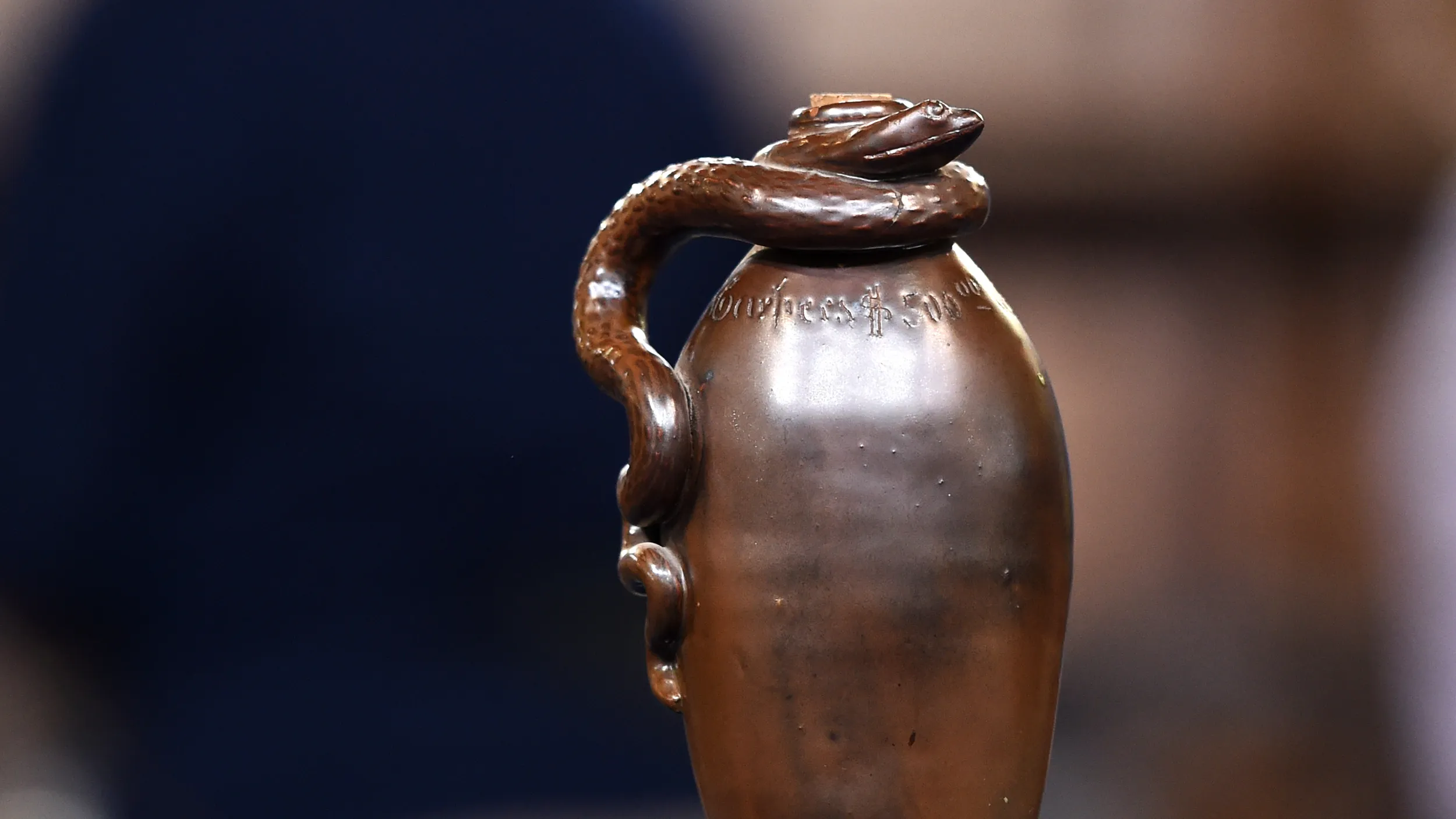
appraisal
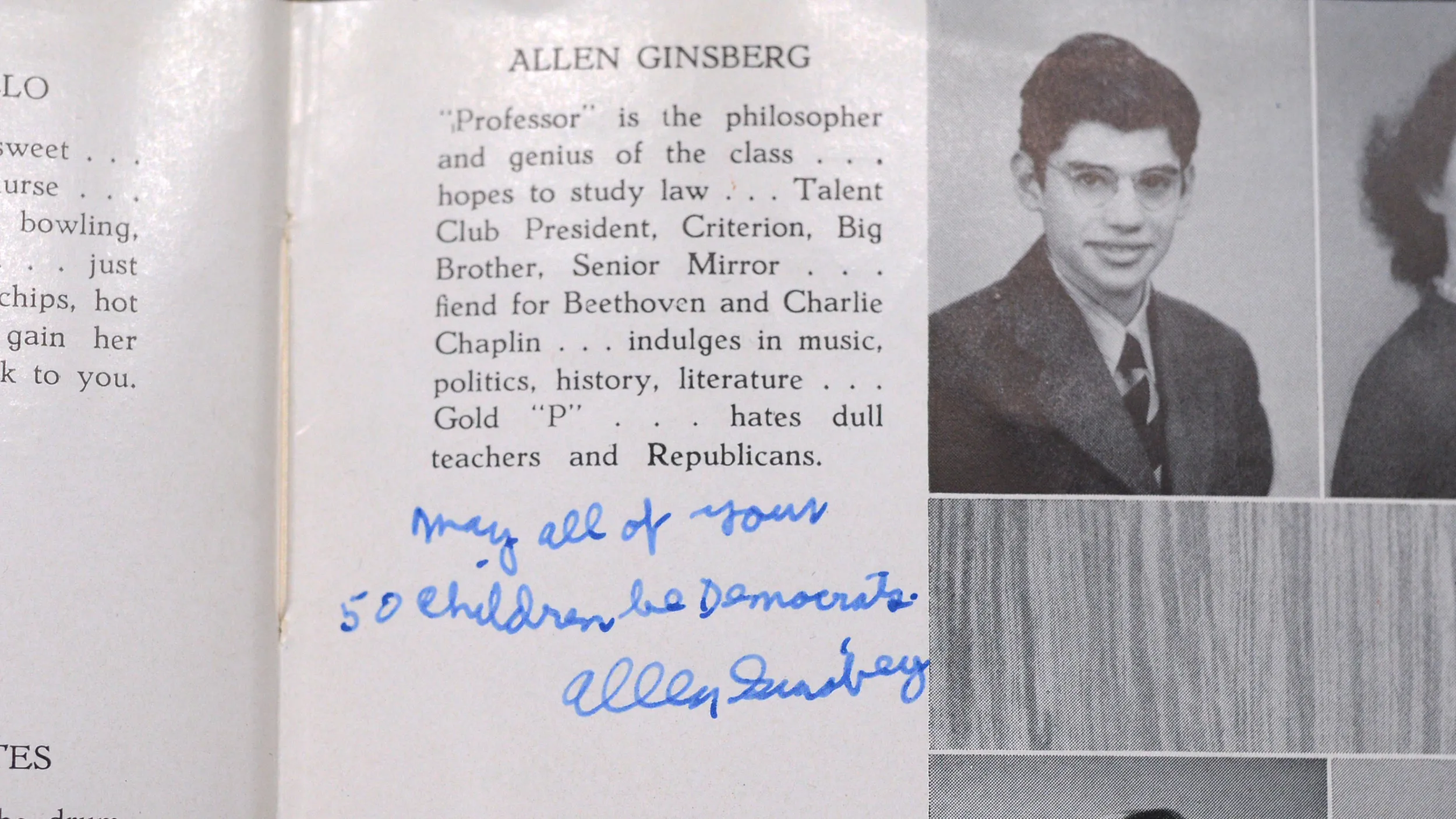
appraisal
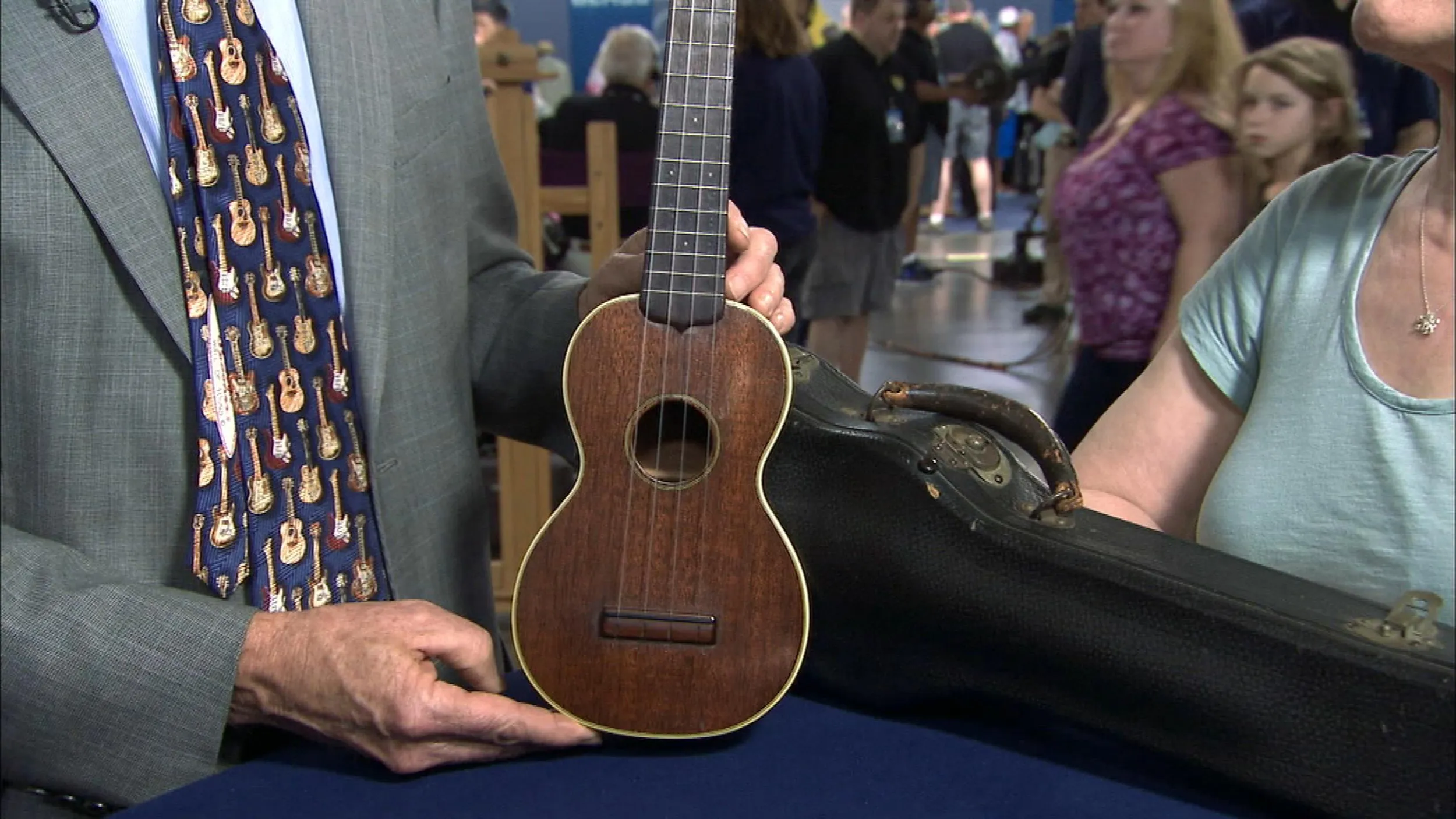
appraisal
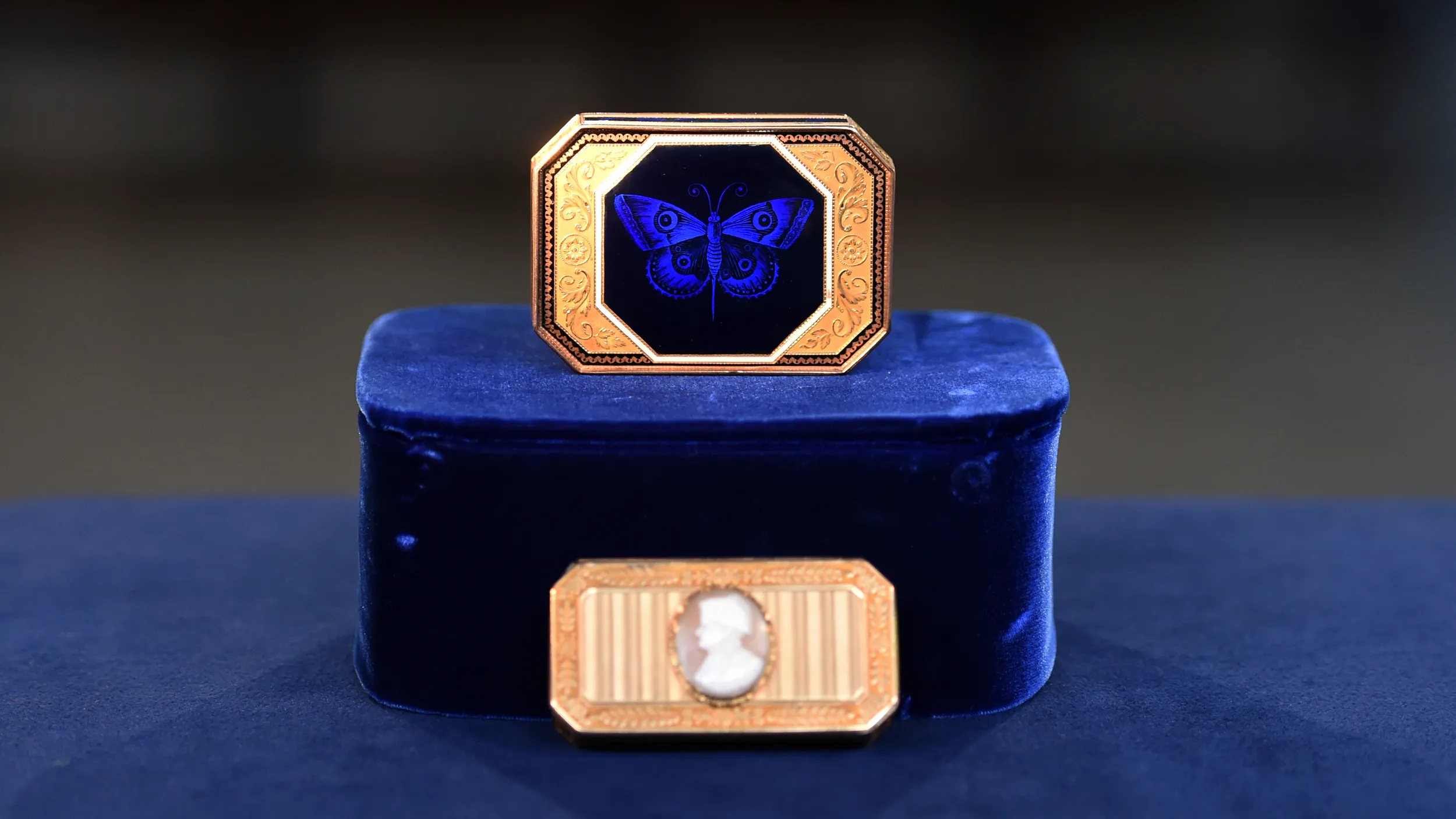
appraisal
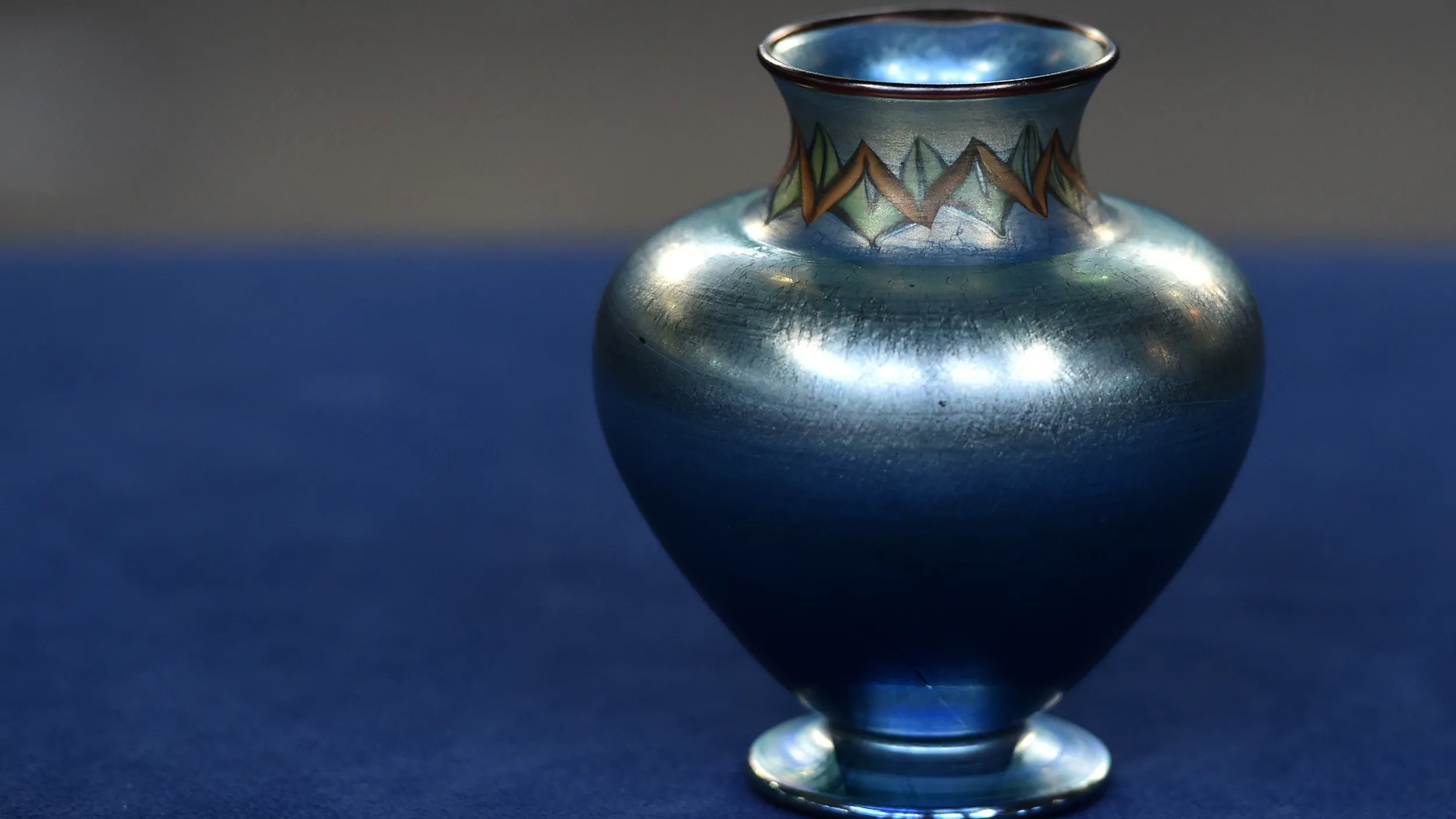
appraisal
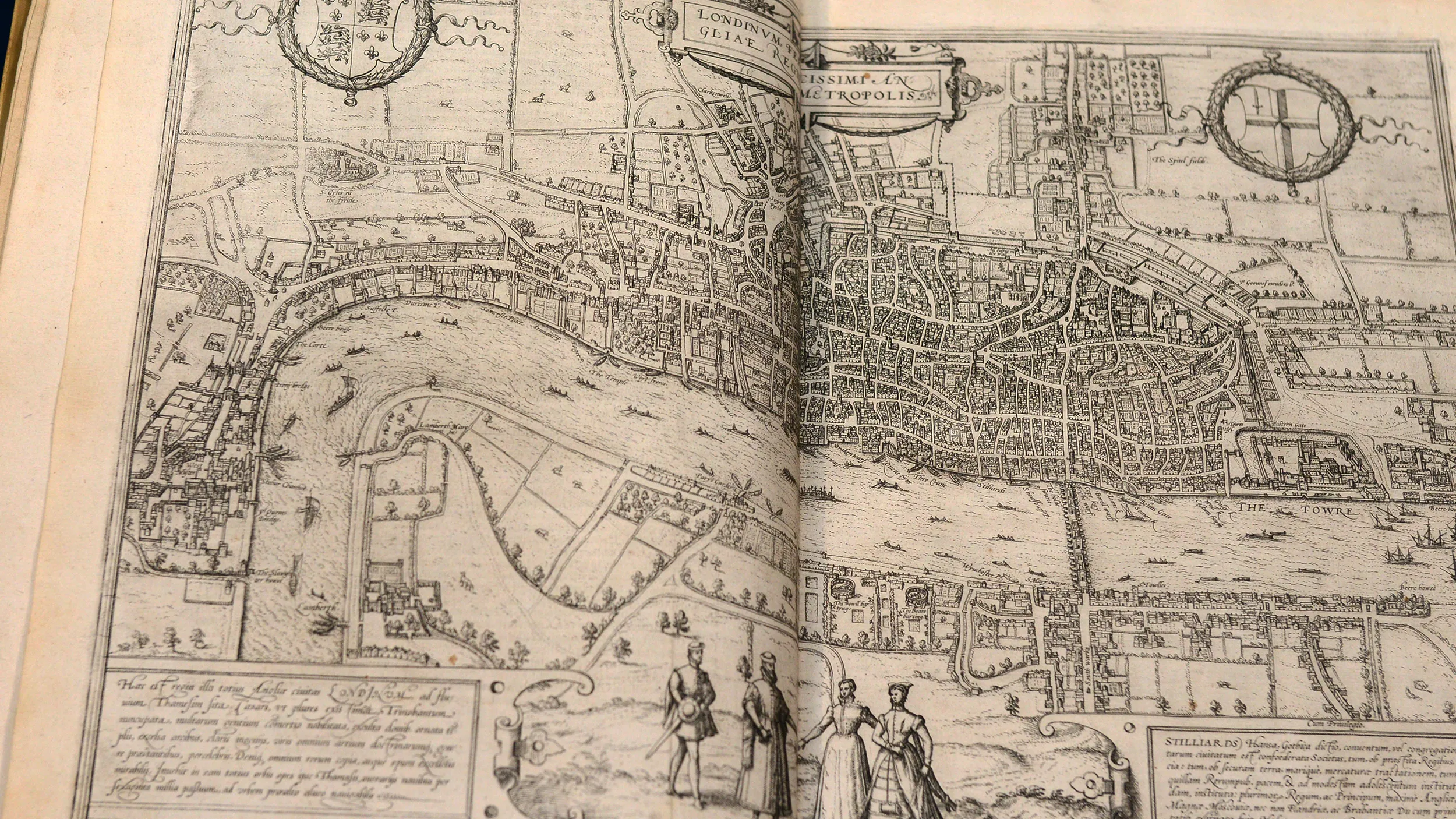
appraisal
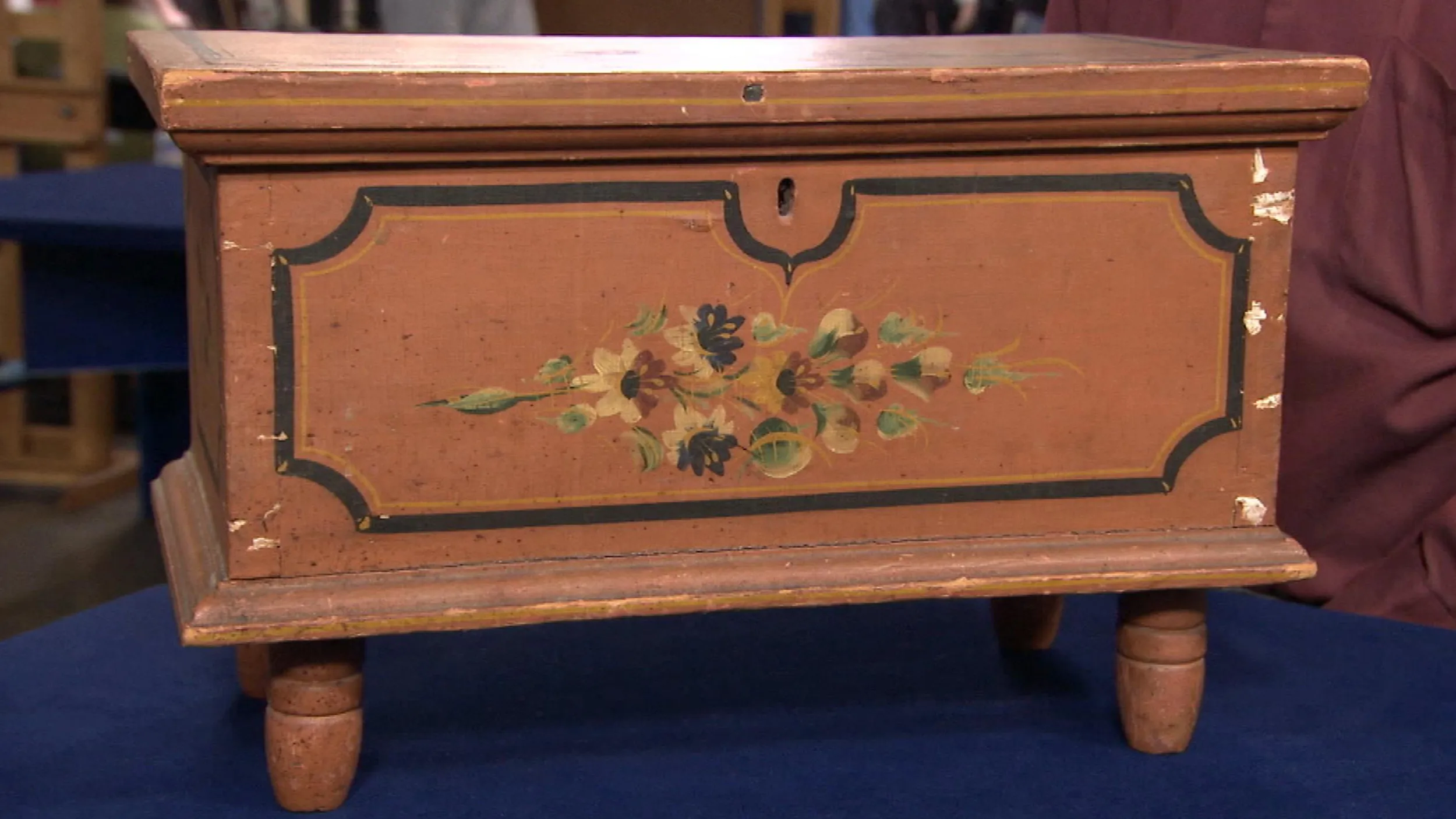
appraisal
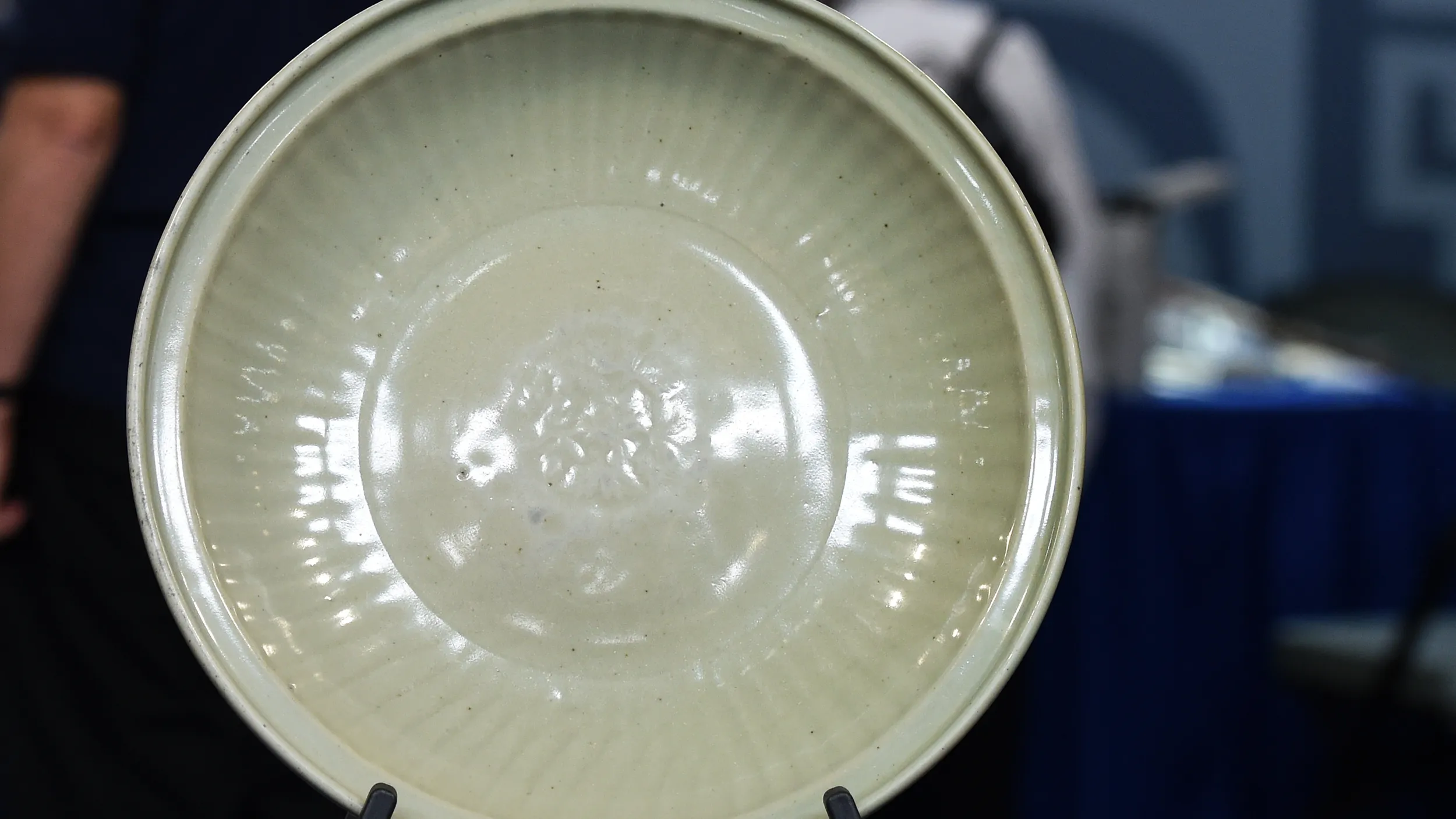
appraisal
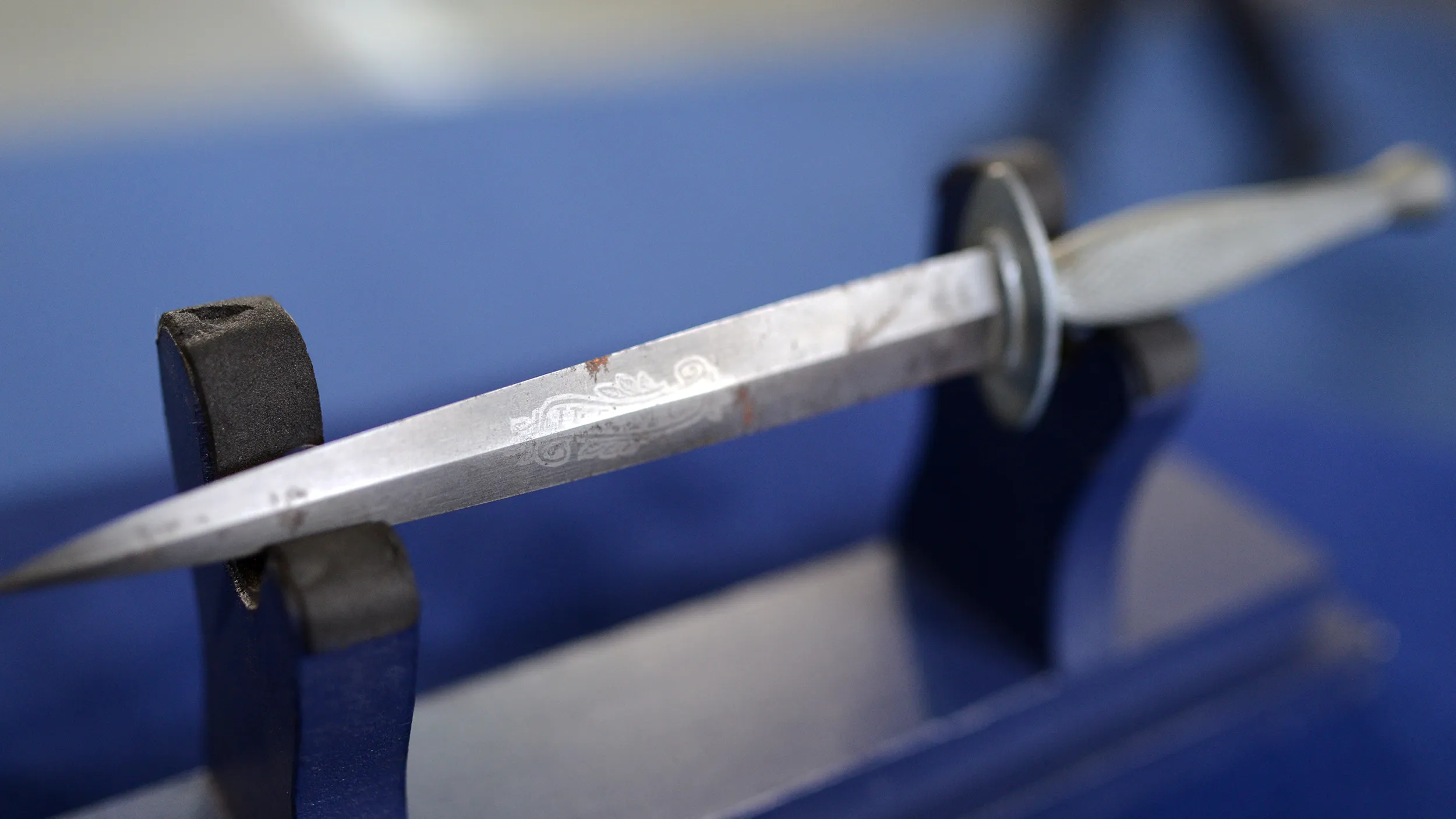
appraisal
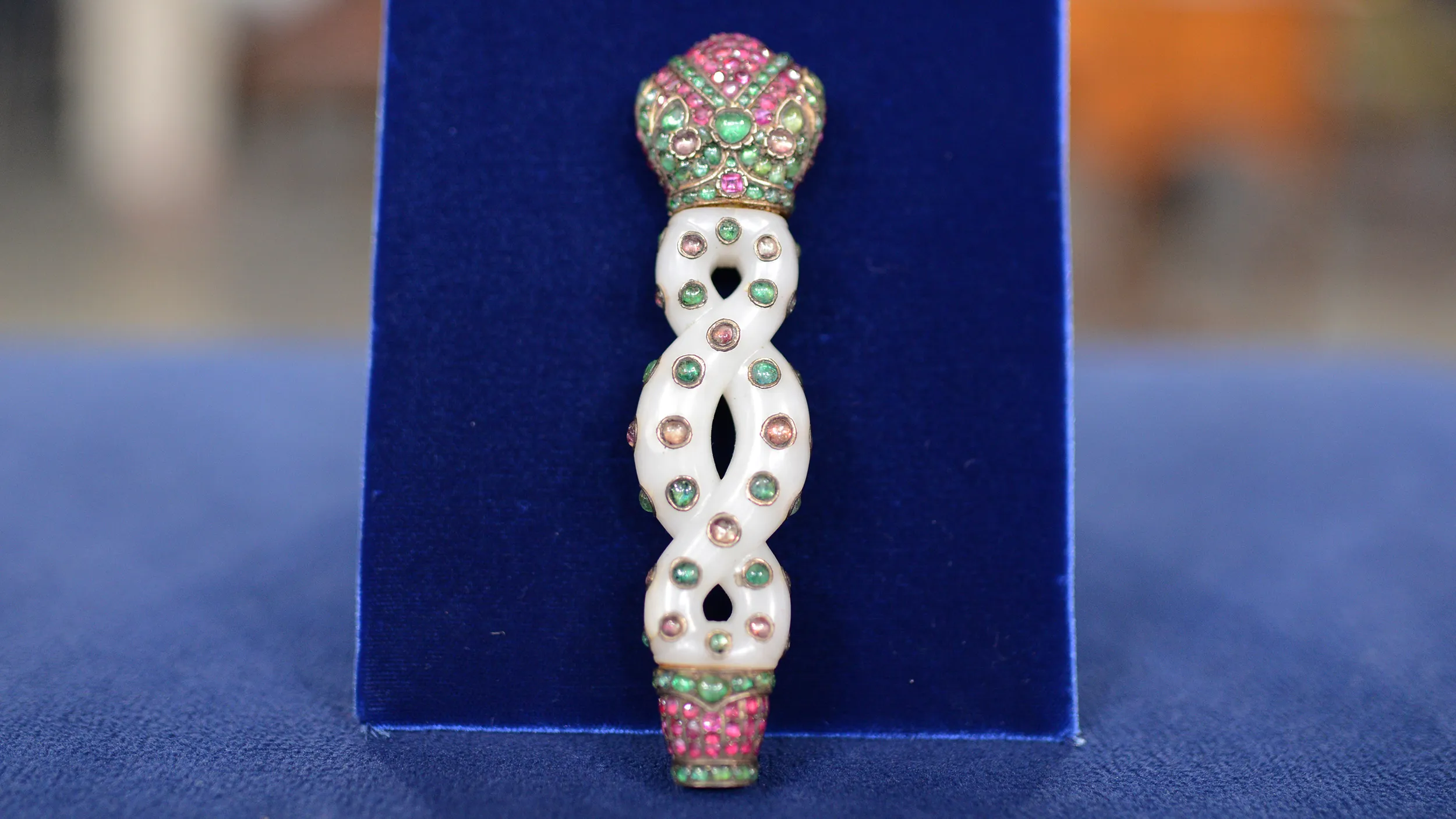
appraisal
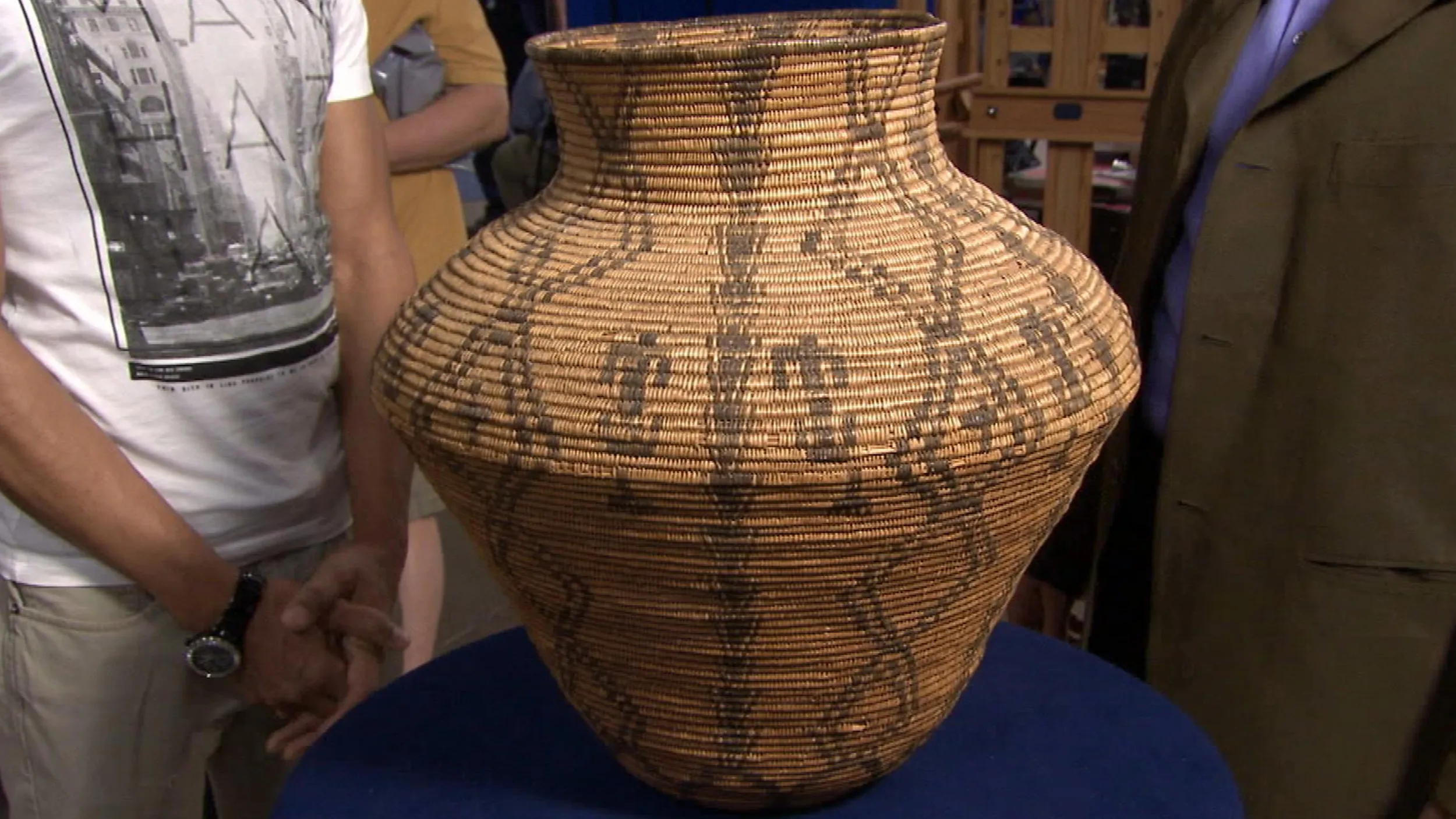
appraisal
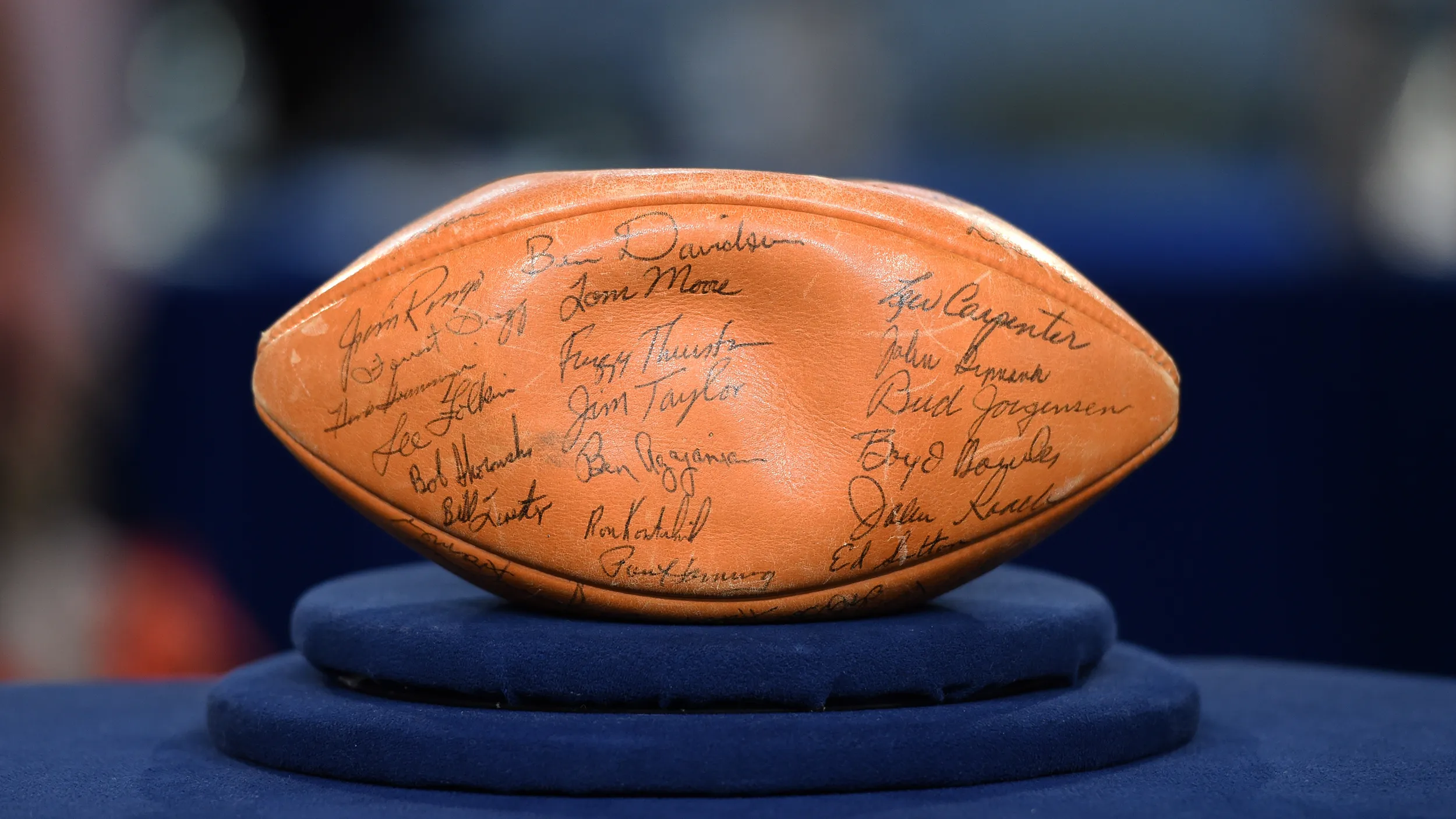
appraisal
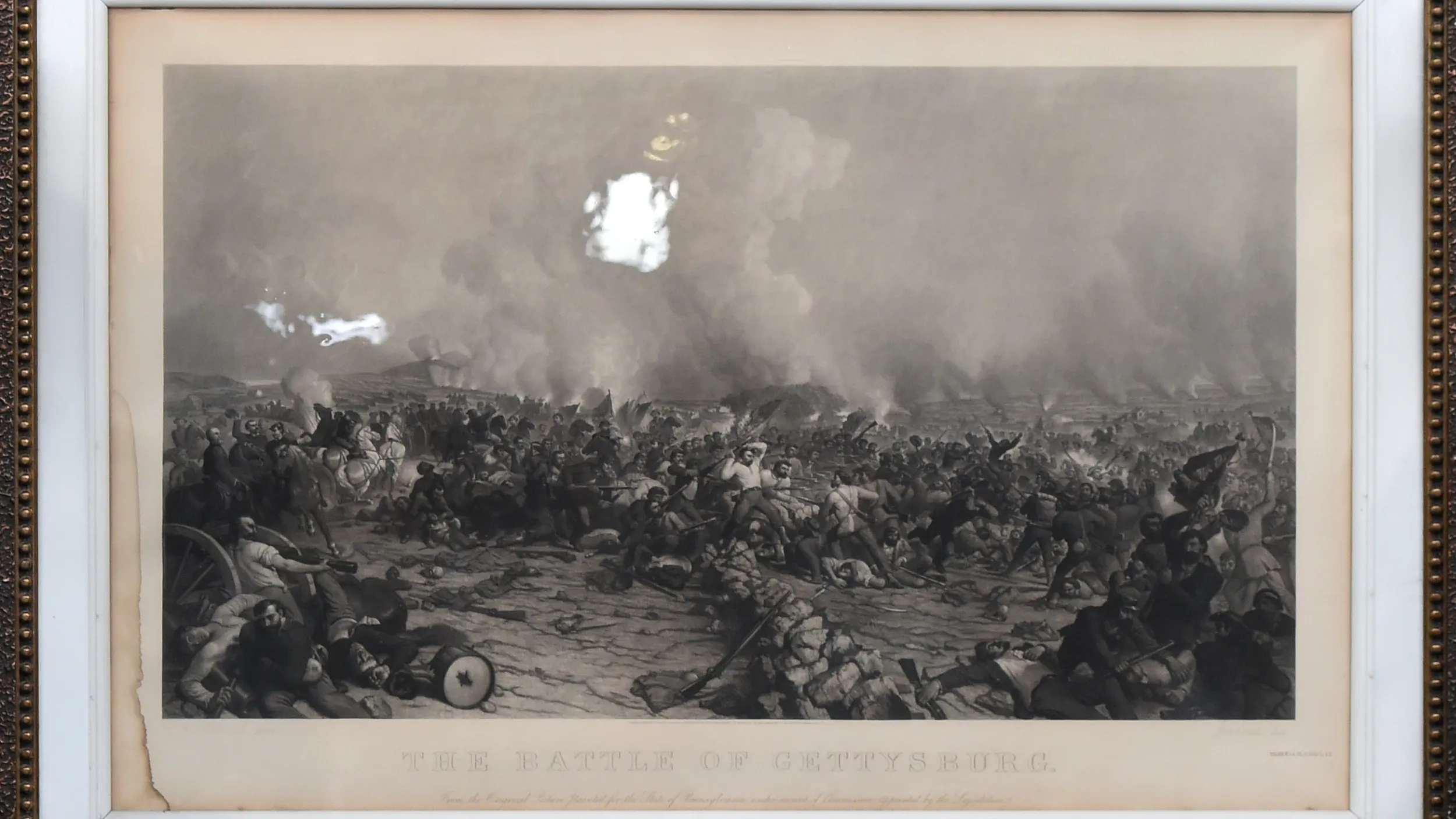
appraisal
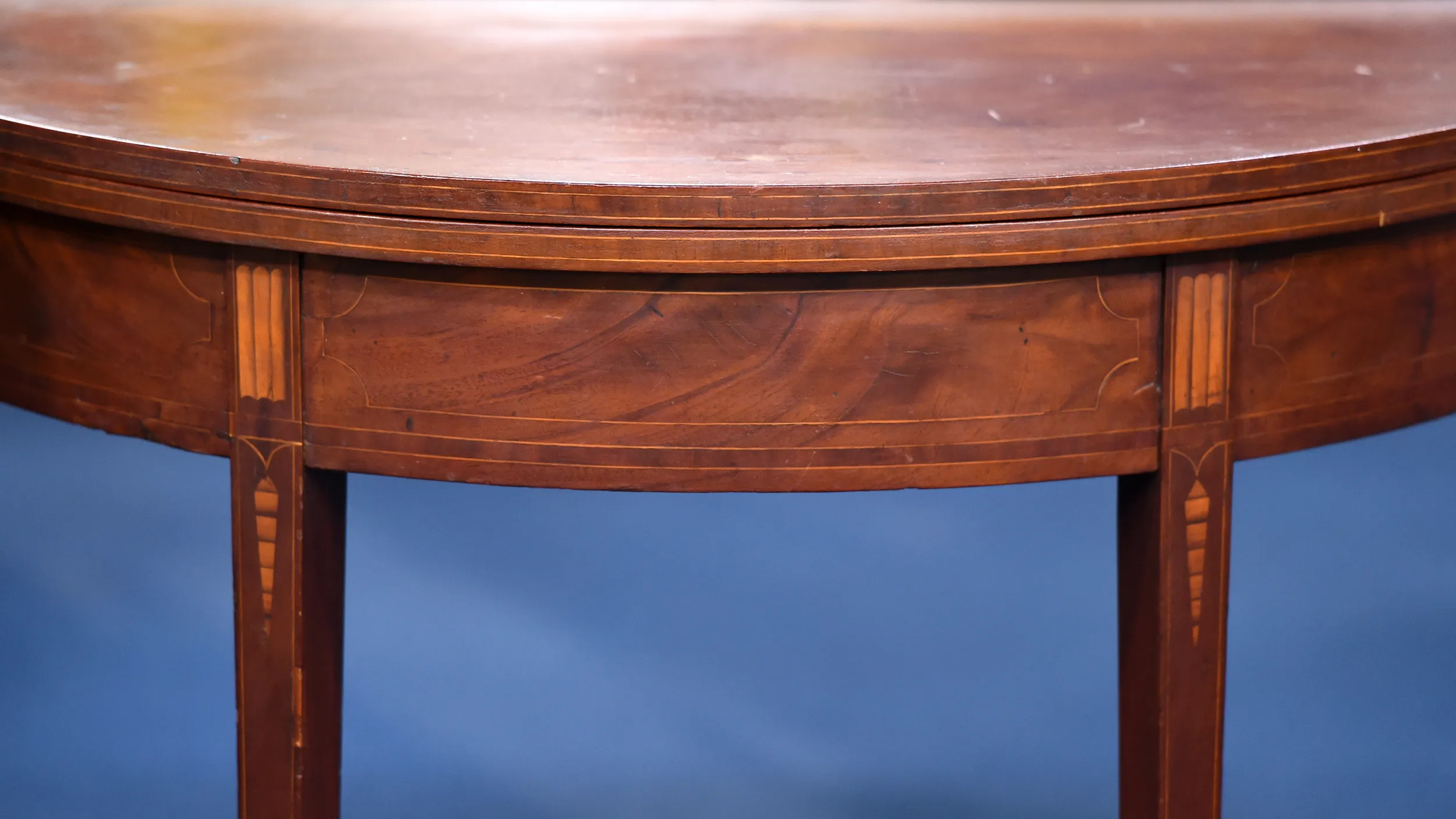
appraisal
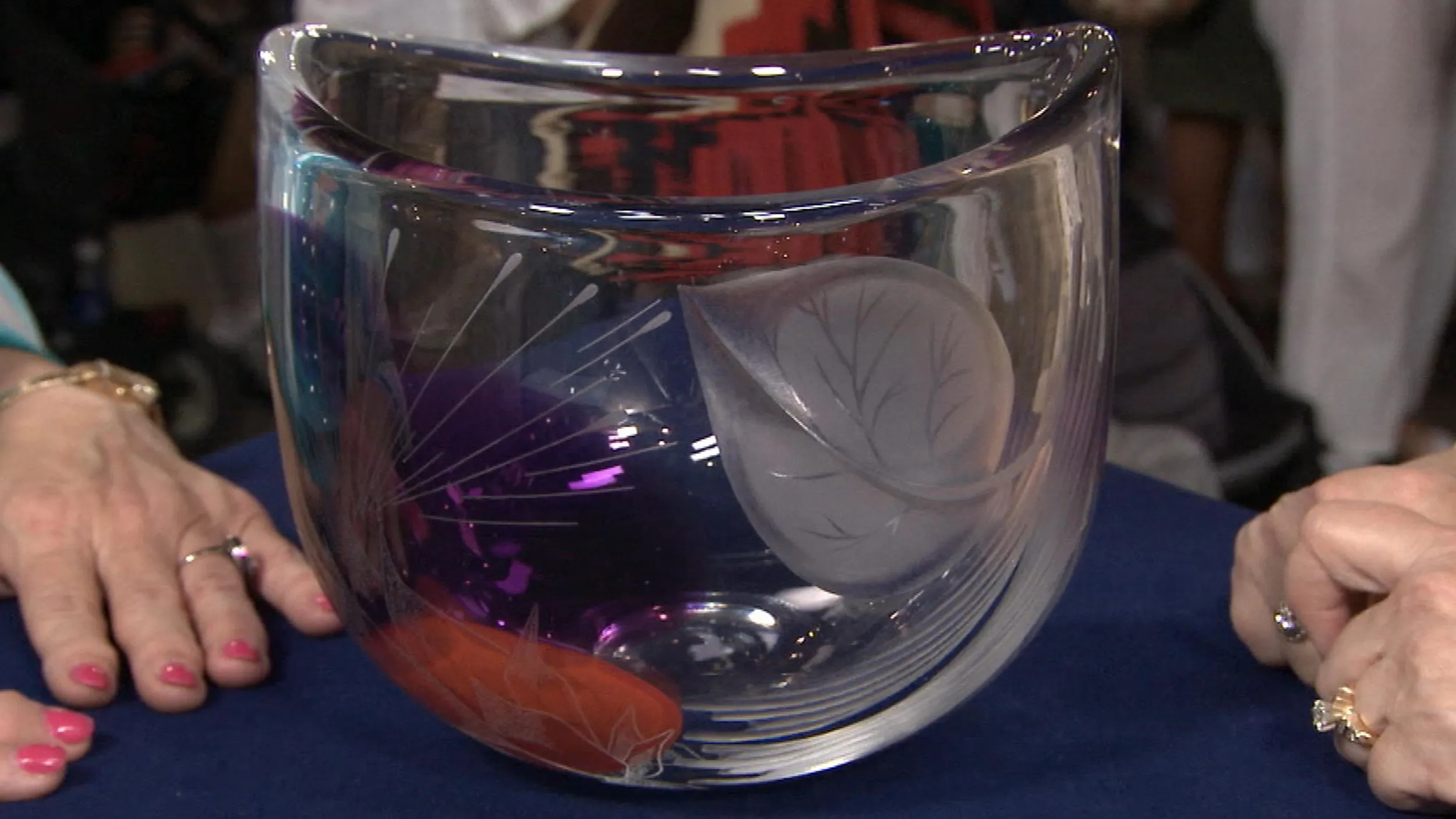
appraisal
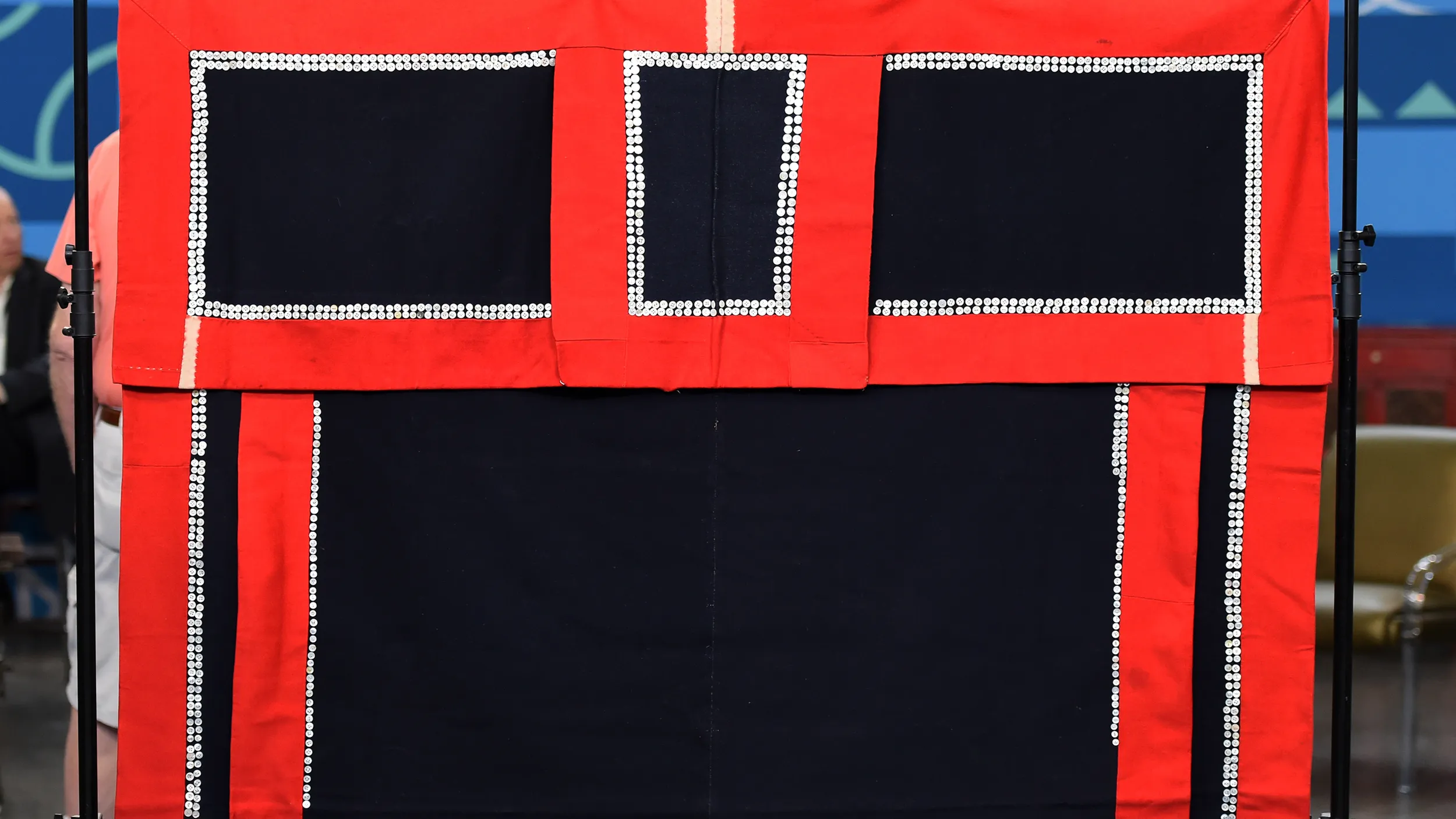
appraisal
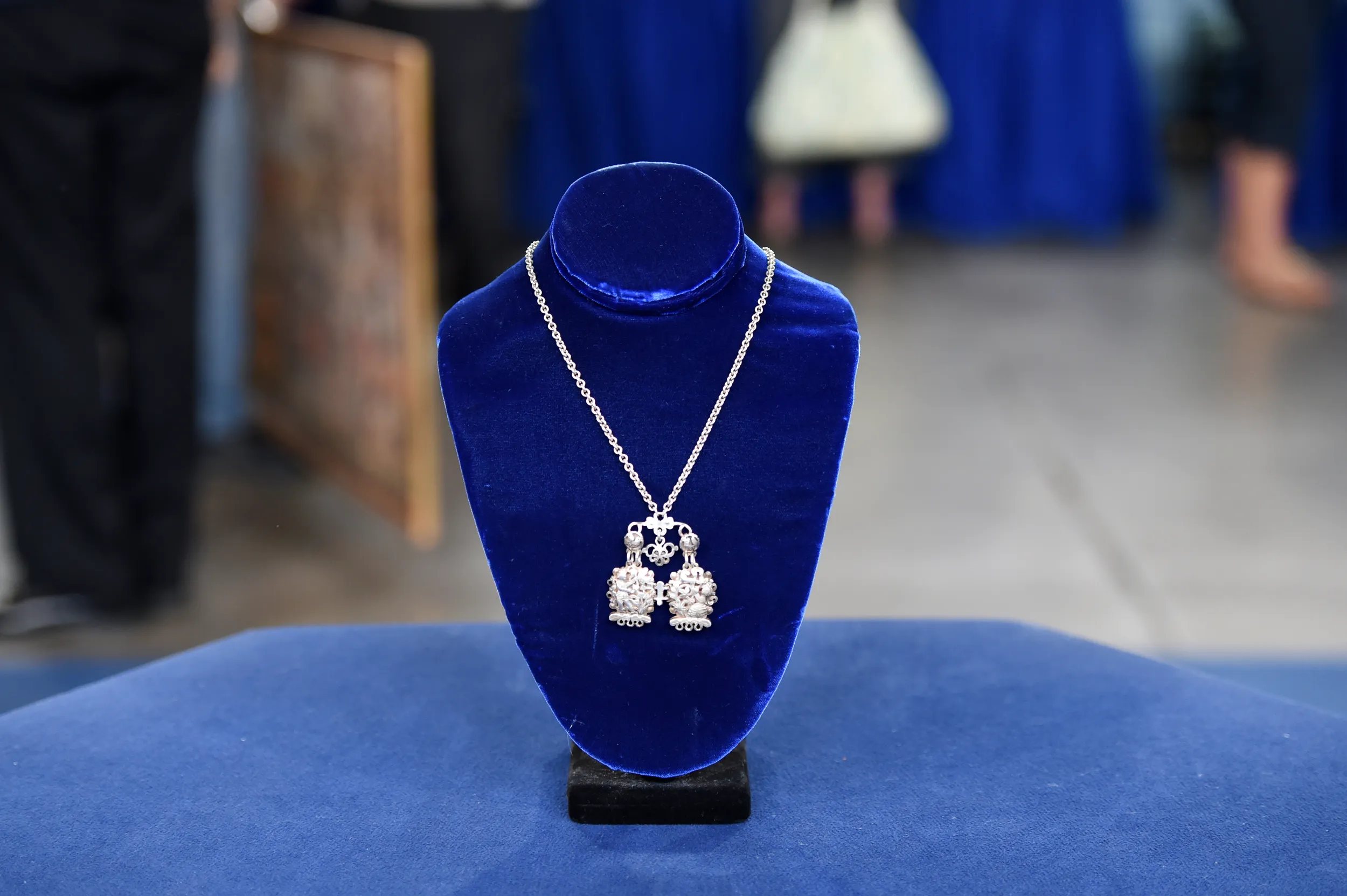
appraisal
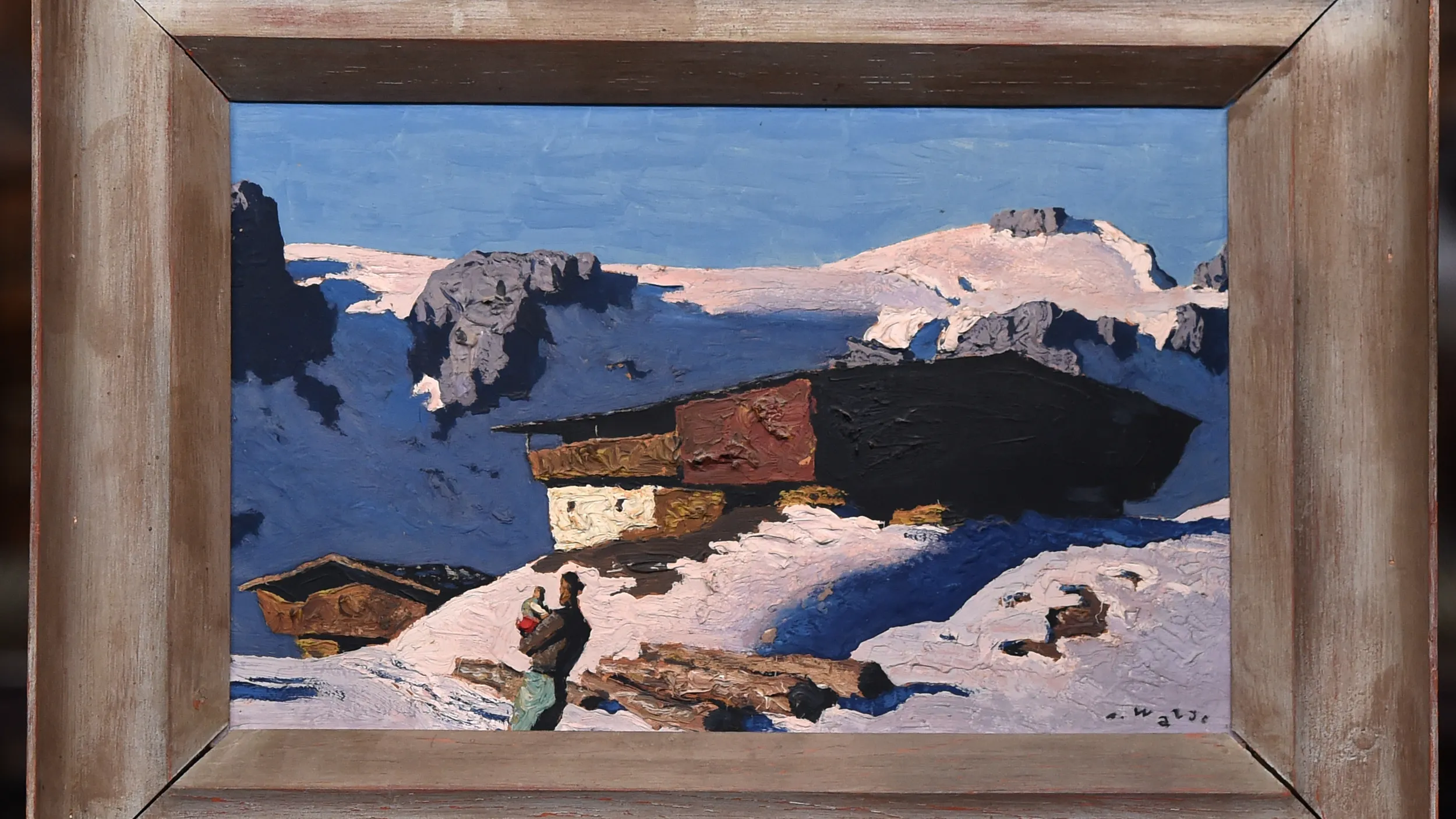
appraisal
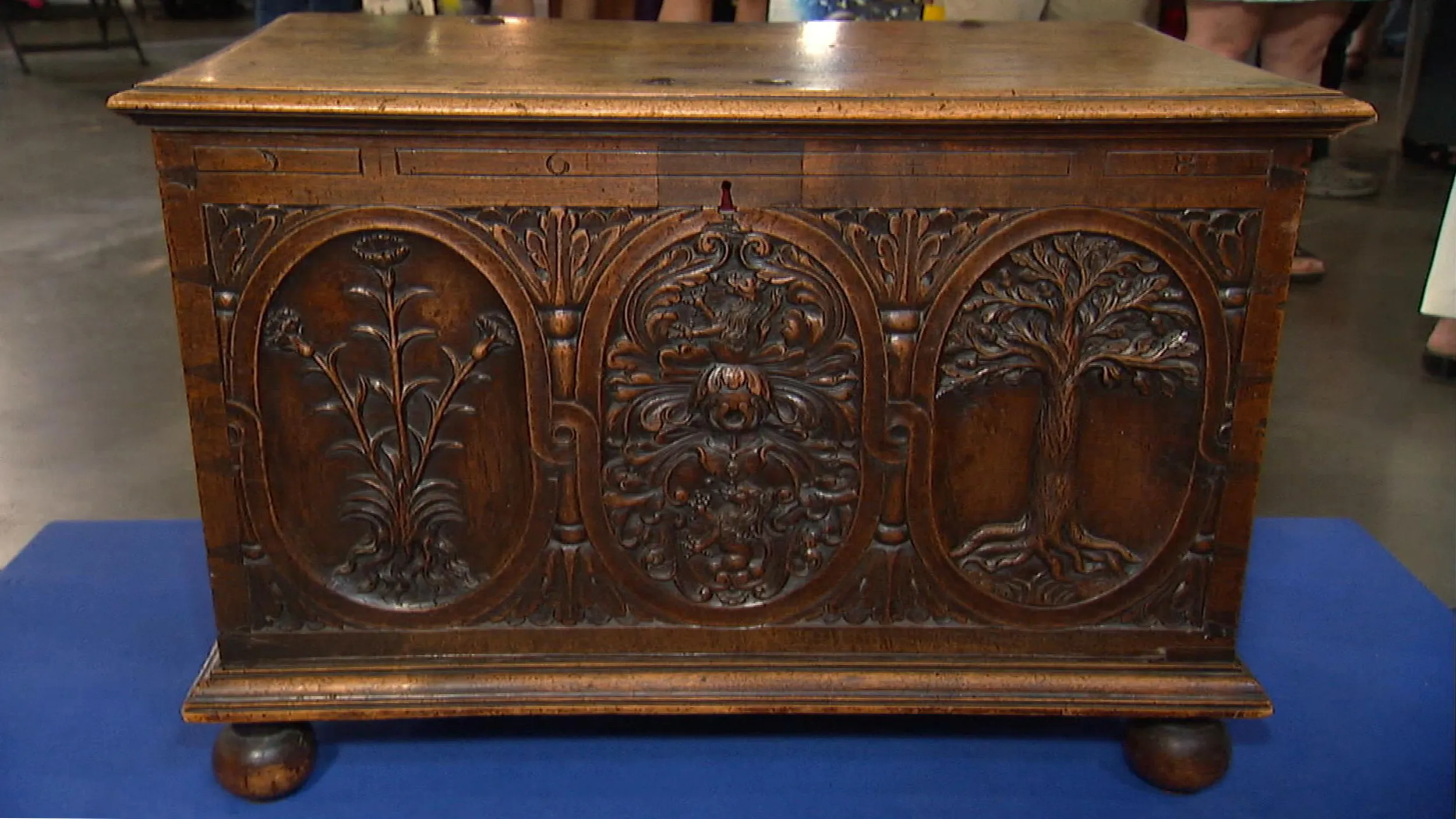
appraisal

appraisal
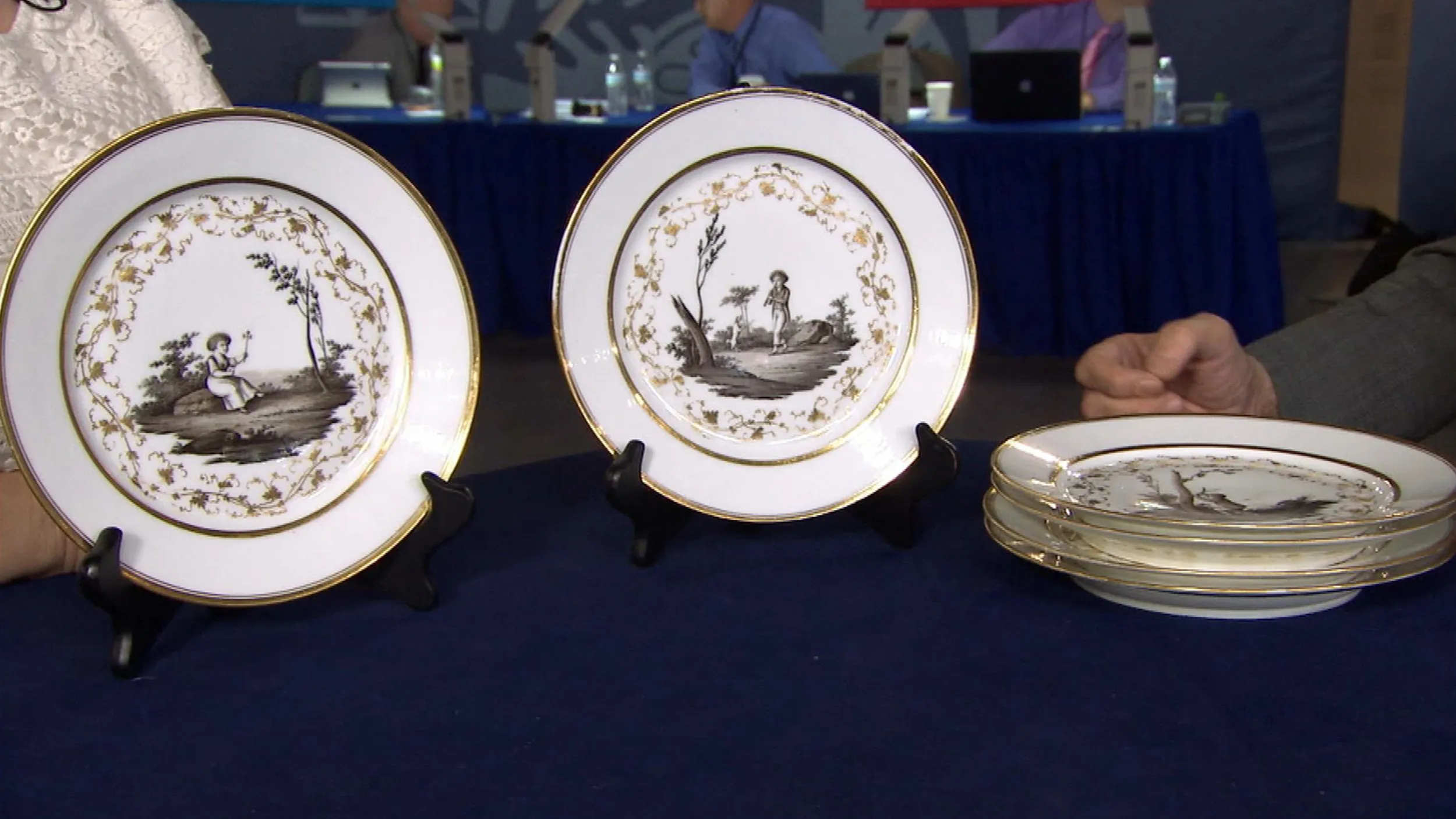
appraisal
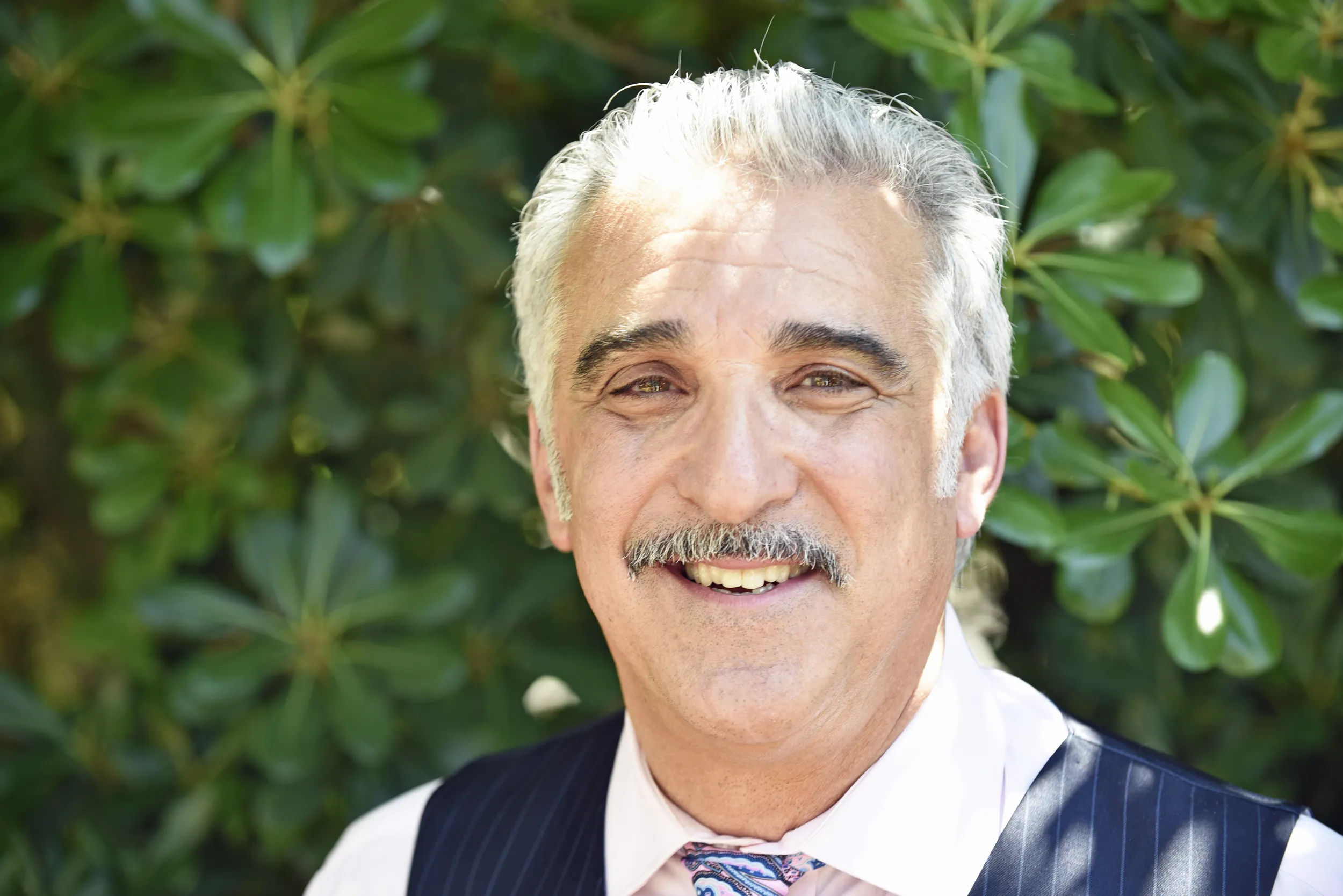















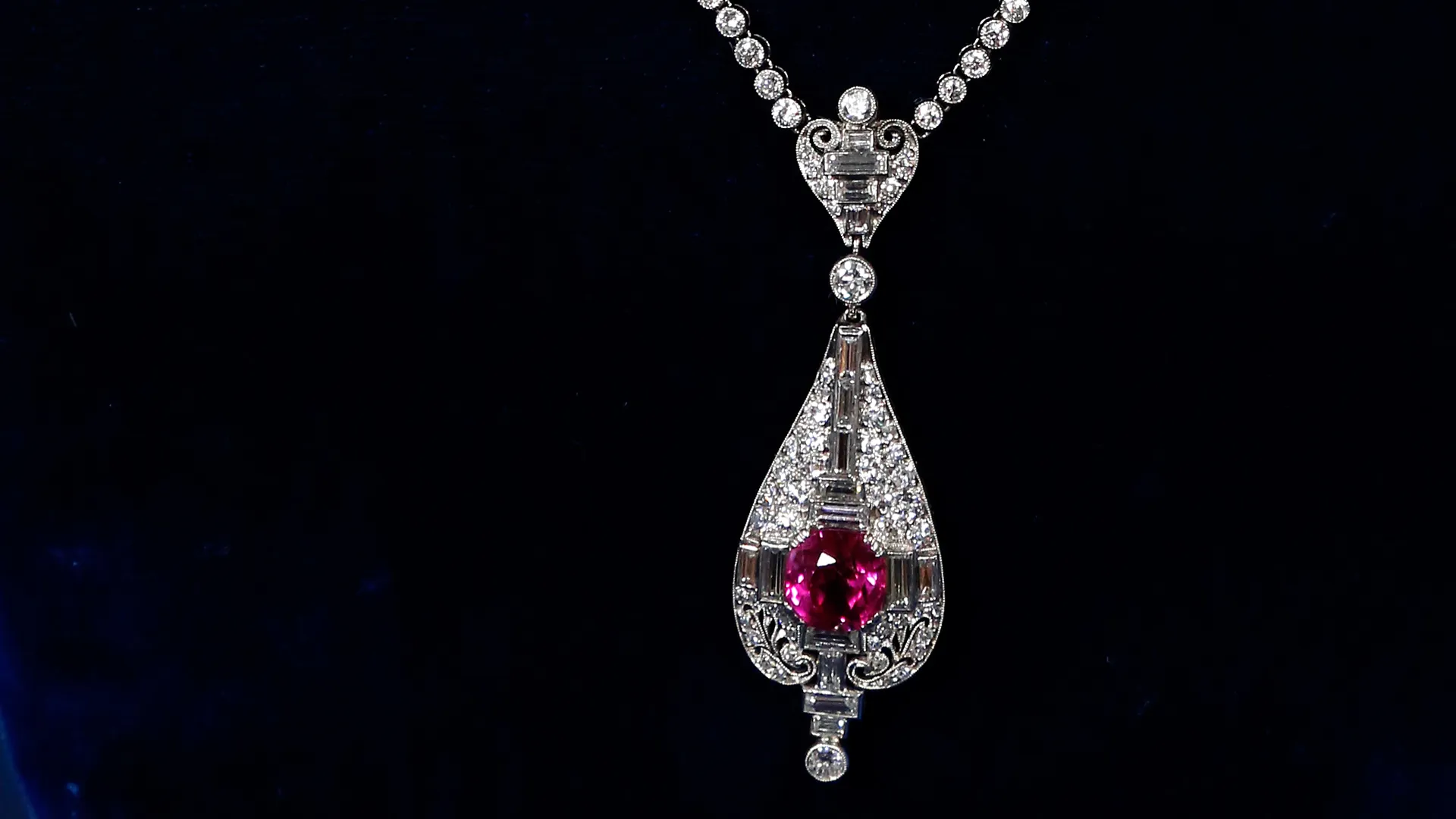
After appraising a diamond and ruby necklace in Boise, Idaho, for $80,000 to $100,000, jewelry appriaser Peter Shemonsky provides some background and guidance on U.S. regulations surrounding the importation of Burmese ruby and jade items.
A weekly collection of previews, videos, articles, interviews, and more!
Funding for ANTIQUES ROADSHOW is provided by Ancestry and American Cruise Lines. Additional funding is provided by public television viewers.
ANTIQUES ROADSHOW is a trademark of the BBC and is produced for PBS by GBH under license from BBC, Worldwide. PBS is a 501(c)(3) not-for-profit organization.
A weekly collection of previews, videos, articles, interviews, and more!
Test your appraisal knowledge in ROADSHOW's new game — Price Range!







